Arts & Culture
Noise and Sounds: An Artform
Throughout the years, Cebu has been a place of continuous experimentation and innovation.
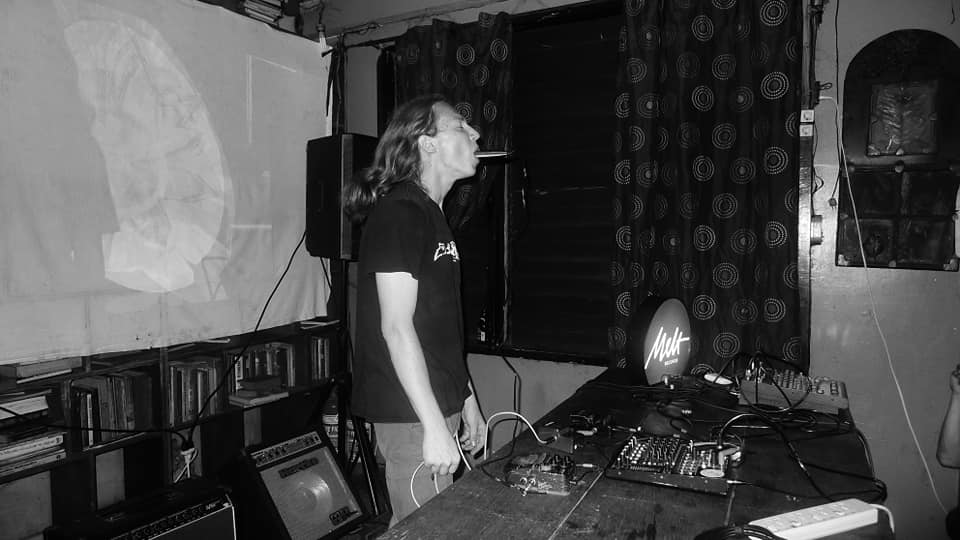
Most people quickly dismiss unpleasant sounds and label anything they don’t usually hear as noise, but for some people, different kinds of sounds combined to produce a distinctive form of music can be considered as an artform. This kind of genre in music is very unusual; it’s not something you commonly hear, but it is an expressive use of sounds in an unconventional way that challenges the distinction of what is musical and non-musical sound.
Here, I ask some artists from the recent Meltdown 3.0 event about their perspective on how noise and sounds are an artform and how they create their own sounds.
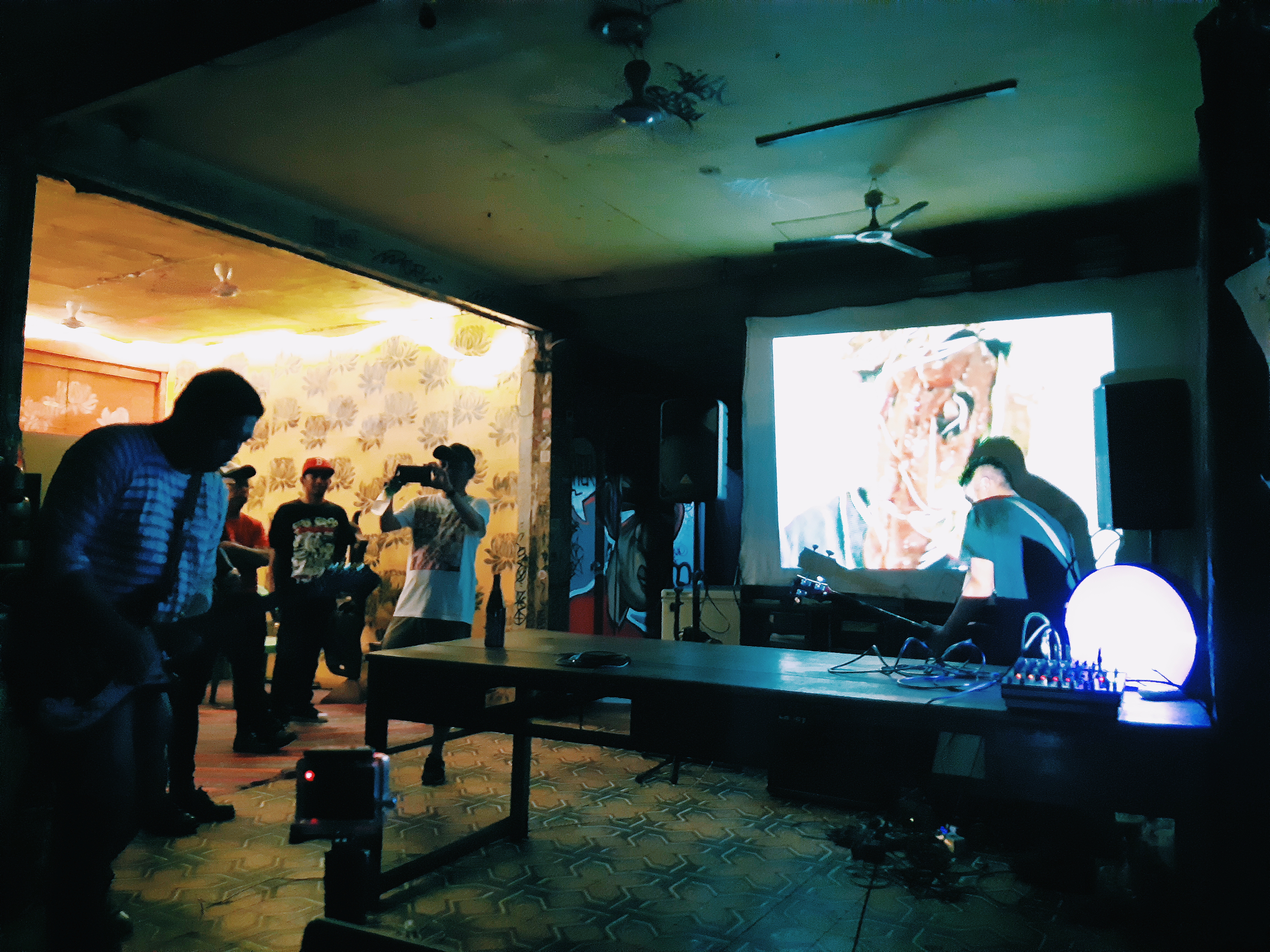
John Caing & Sam Pipebomb, photo by Pj Ong
What made you decide to create this kind of music?
Lush Death: “My discovery of Japanese harsh noise immerse me to something until now I couldn’t explain well. My fascination with artist like Masonna, Hanatarash, Incapacitants, C.C.C.C. and Hijokaidan excites me and later on I decided to do Noise.”
Lush Death is noise killer artist from Binangonan, Rizal. He takes inspiration from almost everything around him. From his feelings, new experiences, films, arts, people and music. He started doing noise since 2008 with his first noise project called thera barra.
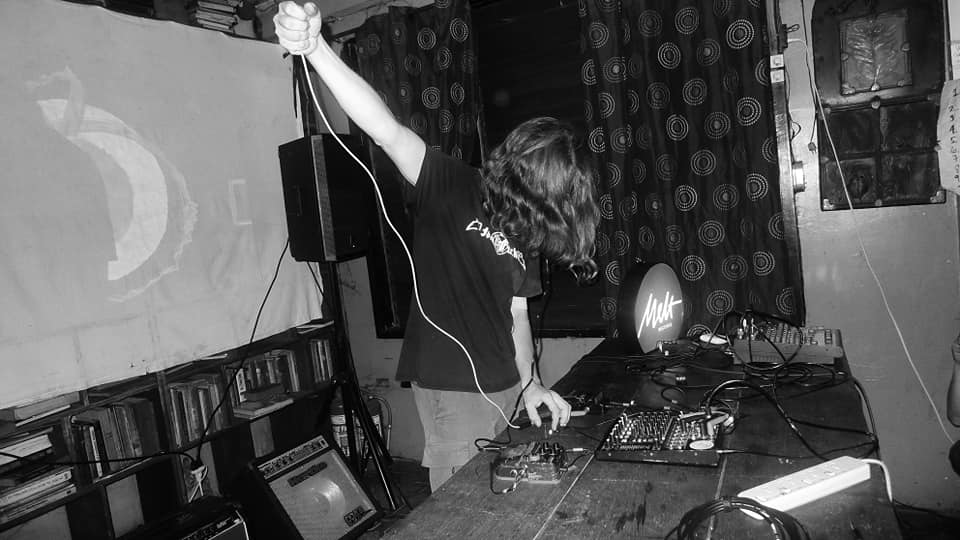
PGR, photo by Lush Death
Another Artist, PGR also known as Paolo, an Italian guy who grew up musically in Norway and graduated at Milan’s jazz music academy in bass guitar said, “I think it has not been a decision so far. More urgence. I needed something I didn’t know. I found it in those chaotic sounds.”
His inspiration in making Noise Music was triggered when he had to get a way to escape and find a comfortable shelter from the madness and the uselessness of what humans generate, since 2012 he continued creating this kind of music.
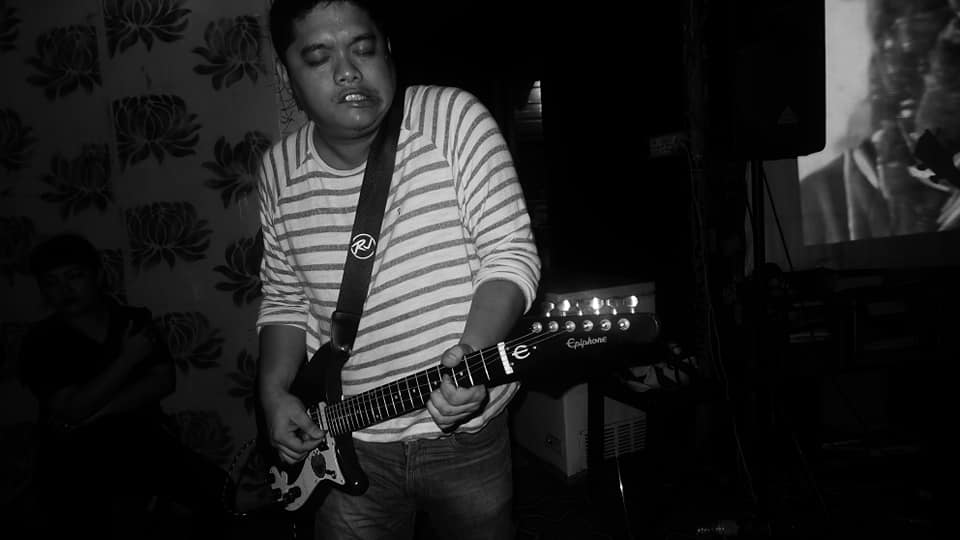
John Caing, photo by Lush Death
Two artists that hail from Cebu, John Caing & Sampipebomb, are known pioneers of Noise Rock—their band Bombo Pluto Ova. When asked why they decided to create this kind of music John said, “Same as everybody else, ganahan mag enjoy sa life while they can, this kind of music it is nothing new, for me this kind of music is rock n roll, just wanna have fun and enjoy. to keep the blood thin.” He was inspired by his family and continues to play in the band since 1997.
“I think the reason was I just keep on exploring new music and experimenting sounds. keeping my open mind to the possibilities.” Future Teenager is a solo experimental project by Karl Lucente which explore and creates music from ambient to noise. Being a fan of Radiohead, Sonic Youth and Bon Iver, he develop his inspiration from the different level of frequencies such musics are producing but still you can totally grasp it. He started doing this since 2015 when his friends made a show called Abrupt Shift.
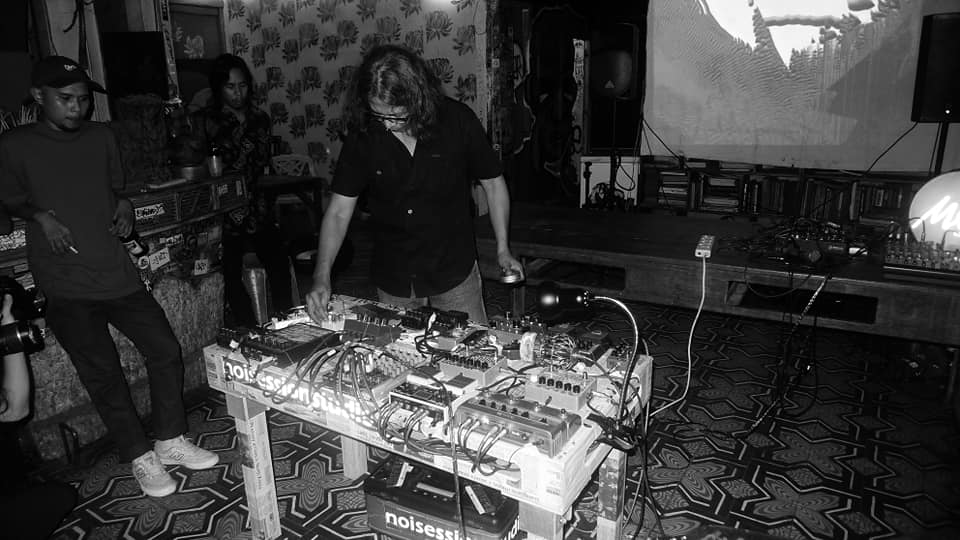
Chris Murillo, credits to Lush Death
How would you describe your music and how is it different from other genres?
“Rock n roll, sound art, I dunno. Call it anything you want, ganahan ra dyud ko mo tukar and have fun while mo tukar. I think pareha raman siguro sa uban naa passion tapos even wala naka time motukar pangitaan gihapon nmu paagi kay kibaw ka inig at the end of the day fullfiling siya para nmu, padayon gihapon ka kay malingaw man dyud ka.” -John Caing
“Noise worship” “It’s everything they try to avoid on a radio type of music.
“Feedback, static, glitches, unwanted frequencies and a lot of mistakes.” -Lush Death
“Medicine for life boredom. Honest. it’s just different, as luckily anything else is.” -PGR
“As of now, I’m not sure, Future Teenager is still rarely new. Just a different take on appreciating music.” -Karl Lucente
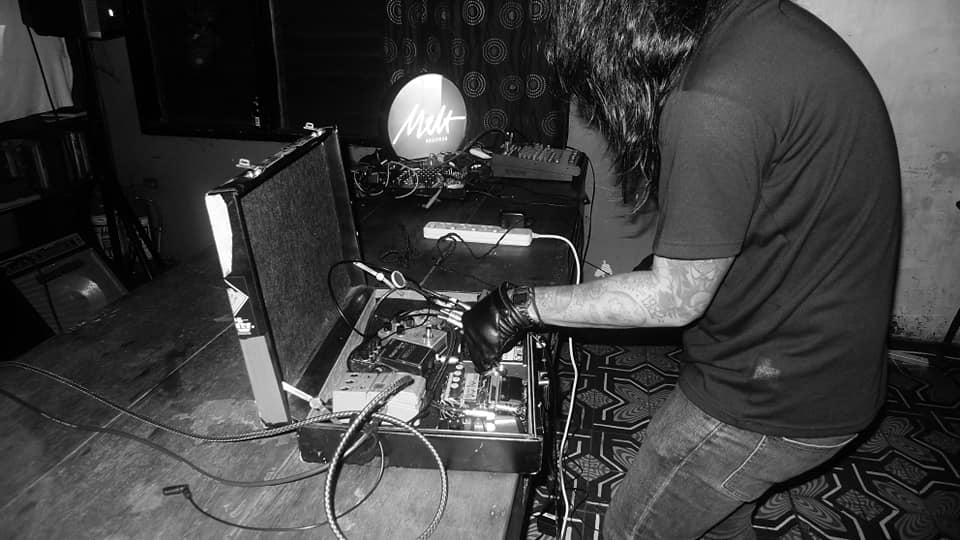
Lush Death
How does this kind of genre become art? Or how is this genre an art form?
“Well yes, it is art and there is a lot of discussions about this. But it doesn’t matter to me, if people recognized this or not as an art form or music. As long as I feel something in doing it and people who watched me perform live or listen to my record get some kind of a trip or experienced something, well that is more important to me. I tried not to over analyzed everything, art/music whatever they call it.” -Lush Death
“Music is Art!” -Karl Lucente
“Self expression, it takes time and patience para ma sharpen ug mugawas natural sa imuha ang gusto nmu buhaton, i think mao sad na ang art, padayun lang dyud permi until kung wala na gana mo tukar di mo undang na.” -John Caing
“I am not aiming to art and i don’t consider myself an artist. thus i cannot answer to this. Someone would say it’s art, but for me it’s just pleasing sound. something i like to listen to.” -PGR
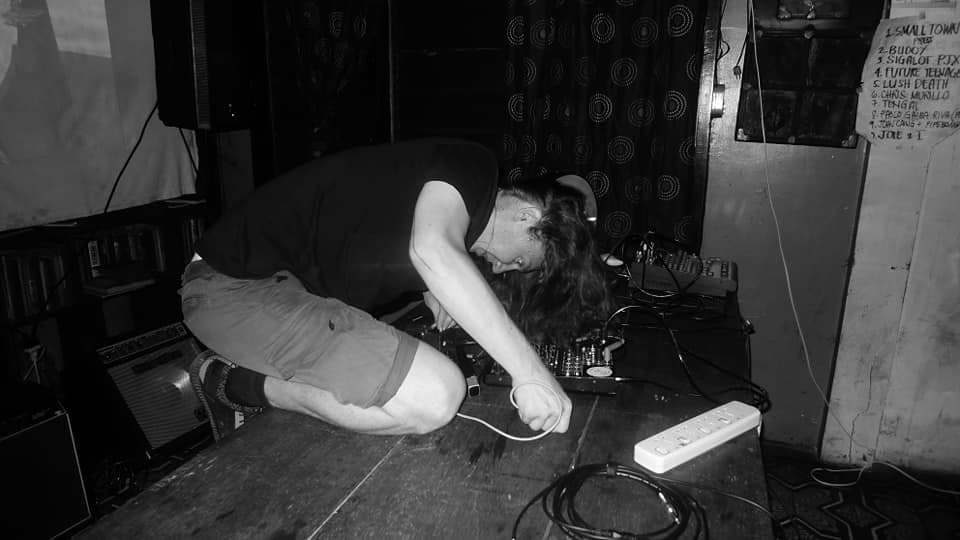
PGR, Photo by Lush Death
What is your goal or vision when you create music?
“For me,doing noise is like a therapy. It helps me to cope with my anxiety and ruthless routine.” -Lush Death
“Inig tukar nako mag imagine raman ko, tapos ako e transort sa guitara after that imuha na i-let go ang outcome.” -John Caing
“As of now, I’m not sure about it but what in my mind while playing was i just wanted to share what’s on my mind” -Karl Lucente
“I like the fact that anyone can get to his/her own conclusion. the listening it’s open to any response. my goal is to have no goal.” -PGR
What is your creative process when making your music and what are the gadgets you use to create sound?
“For recording and live set, its almost the same set of gears. For recordings, I always have a title in mind first, before I record a track. Almost all of my recordings are raw and unedited. Usually its from various things I experience from day to day basis. I love the appeal of one take recordings. For live performance, its on the spot. I just make sure before the show that my gear is working perfectly. I use a contact microphone and feed it to a series of effects pedal. It’s pretty much simple, I try to fit everything. I need into a portable suitcase.” -Lush Death
Lush Death also uses a contact microphone while playing in his gig in Cebu. It amplifies vibrations and impact and send the signal to any inputs. Which is amazing when your an audience watching the set, trying to listen to the sound produced by every hand gestures.
“The process is totally improvised. on the other hand i know my set up quite well, so i know how to get this or that sound. The set up is very simple. Contact microphones or microphones run into distortion and equaliser pedal. I like to use radio as sound source too.” -PGR

PGR, photo by Lush Death
PGR’s set the energetic one, he moved a lot and even stood up in the table while performing which resembels the energy of the sounds he produces. He also used an old mic from an hifi. Which he puts in his mouth to produces breathing sounds, screams and other sounds to change the feedback frequencies.
“Both, there are times on the spot and sometimes i prepare before a gig. I loop, oscillate and reverb! I just combine it. Something holistic yet destructive kind of sound.” -Karl Lucente
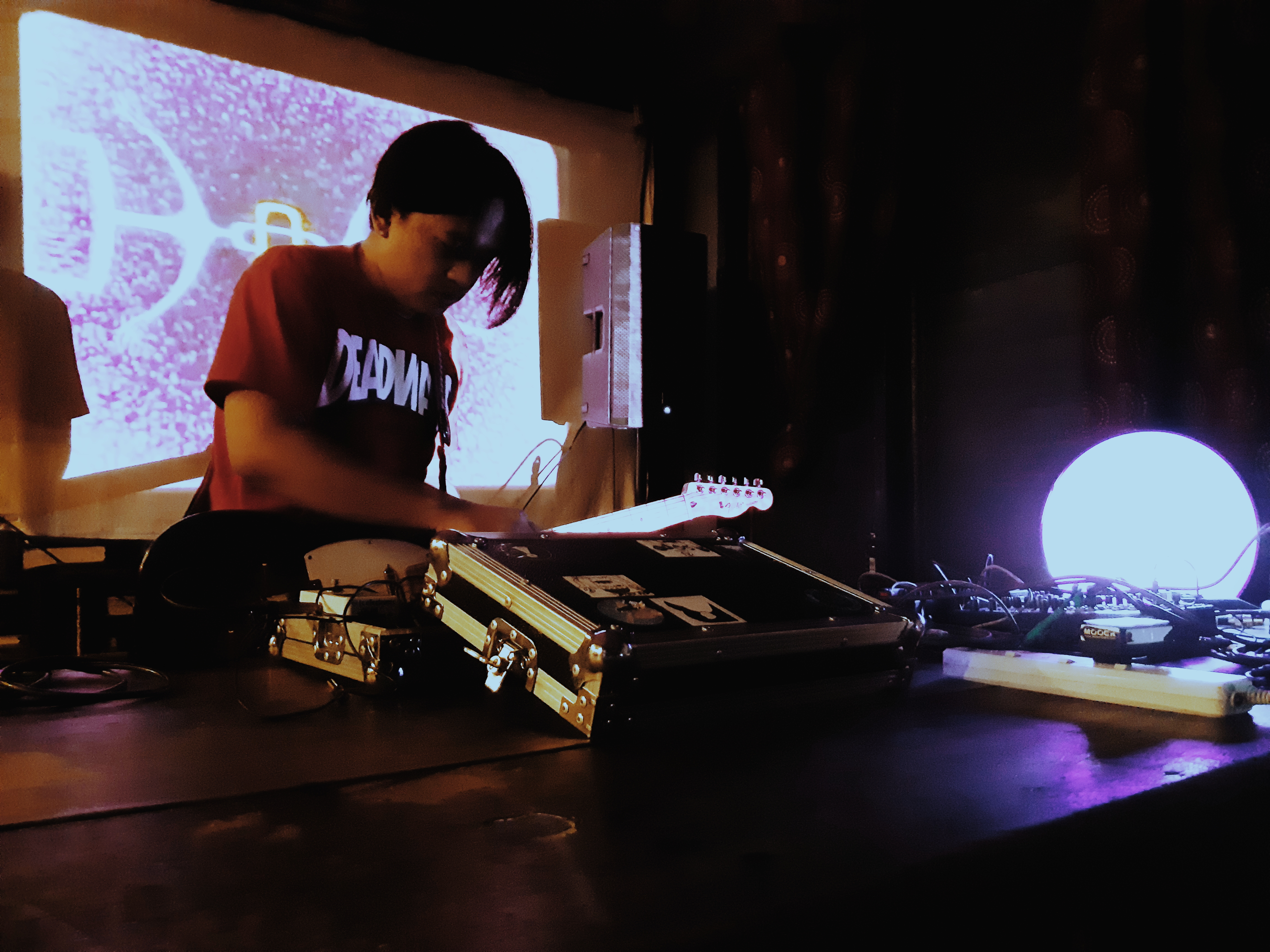
Future Teenager, photo by Pj Ong
“Improvised tanan. Since bombo pluto ova nag start improvisation dyud na. During sa Melt gig wala dyud ko gadget kay ganahan ko raw siya. mas raw siya mas doul sa akong kasing kasing, mas nindot e manipulate ang noise together with rhythm and chords. sa ako lang simplicity sa set up, simple ug concept mas lingaw kaayu ug dali makabuhat sa imuhang imagination tapos imuha e transform sa music gamit imuha guitara, then let go. mao rana.” -John Caing
Throughout the years, Cebu has been a place of continuous experimentation and innovation. The music scene opens up new and exciting music while the crowd and the community always support each other.
“The crowd in Cebu seemed to be curious for something which maybe doesn’t happen so often in town. I am glad many people showed up. I am confident the other performers and me managed to plant some seeds in the adventors’ ears.” -PGR
“It always feels good playing in front of other people. It doesn’t matter where and to whom i am performing, as long as they are willing to be blessed with static,then we have a deal.” -Lush Death
Trying to grasp all kind sounds I heard that night I felt like my ears were overwhealmened but I am simply amazed on how creative we can be with different kinds of medium to produce art. All the artist produced very distictive music that I personally enjoy. When you listen carefully you can distiguish each sound produce by every movement, every click and every material that is being moved. That’s what made it fun actually listening to it. Just ignore what you’ve learn about how music has to be. Enjoy and feel it. Music is an artfrom, It needs to be felt, that’s how it’s supposed to be.
Arts & Culture
Kultura. Kapital. Kasalukuyan: Art that Speaks of Today
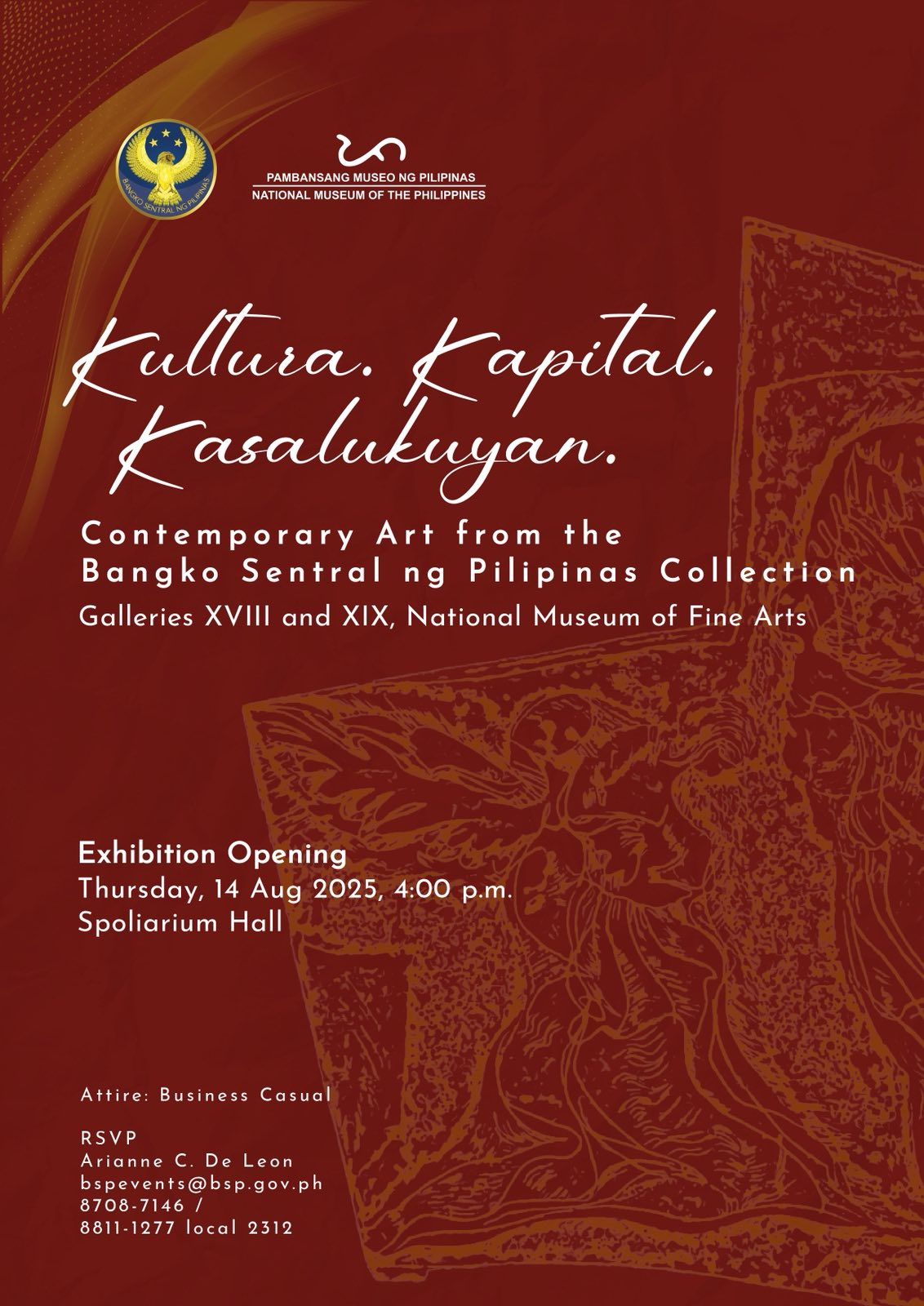
by Jose Carlos G. Campos, Board of Trustees National Museum of the Philippines
The National Museum of the Philippines (NMP) and the Bangko Sentral ng Pilipinas (BSP) recently teamed up to prove that money isn’t just for counting—it’s also for curating! Their latest joint exhibition, Kultura. Kapital. Kasalukuyan: Contemporary Art from the Bangko Sentral ng Pilipinas Collection, is now open, and it’s a real treat for art lovers and culture buffs alike.
On display are gems from the BSP’s contemporary art collection, including masterpieces by National Artist Benedicto Cabrera (Bencab), along with works by Onib Olmedo, Brenda Fajardo, Antipas Delotavo, Edgar Talusan Fernandez, and many more. Some of the artists even showed up in person—Charlie Co, Junyee, Imelda Cajipe-Endaya, Demi Padua, Joey Cobcobo, Leonard Aguinaldo, Gerardo Tan, Melvin Culaba—while others sent their family representatives, like Mayumi Habulan and Jeudi Garibay. Talk about art running in the family!
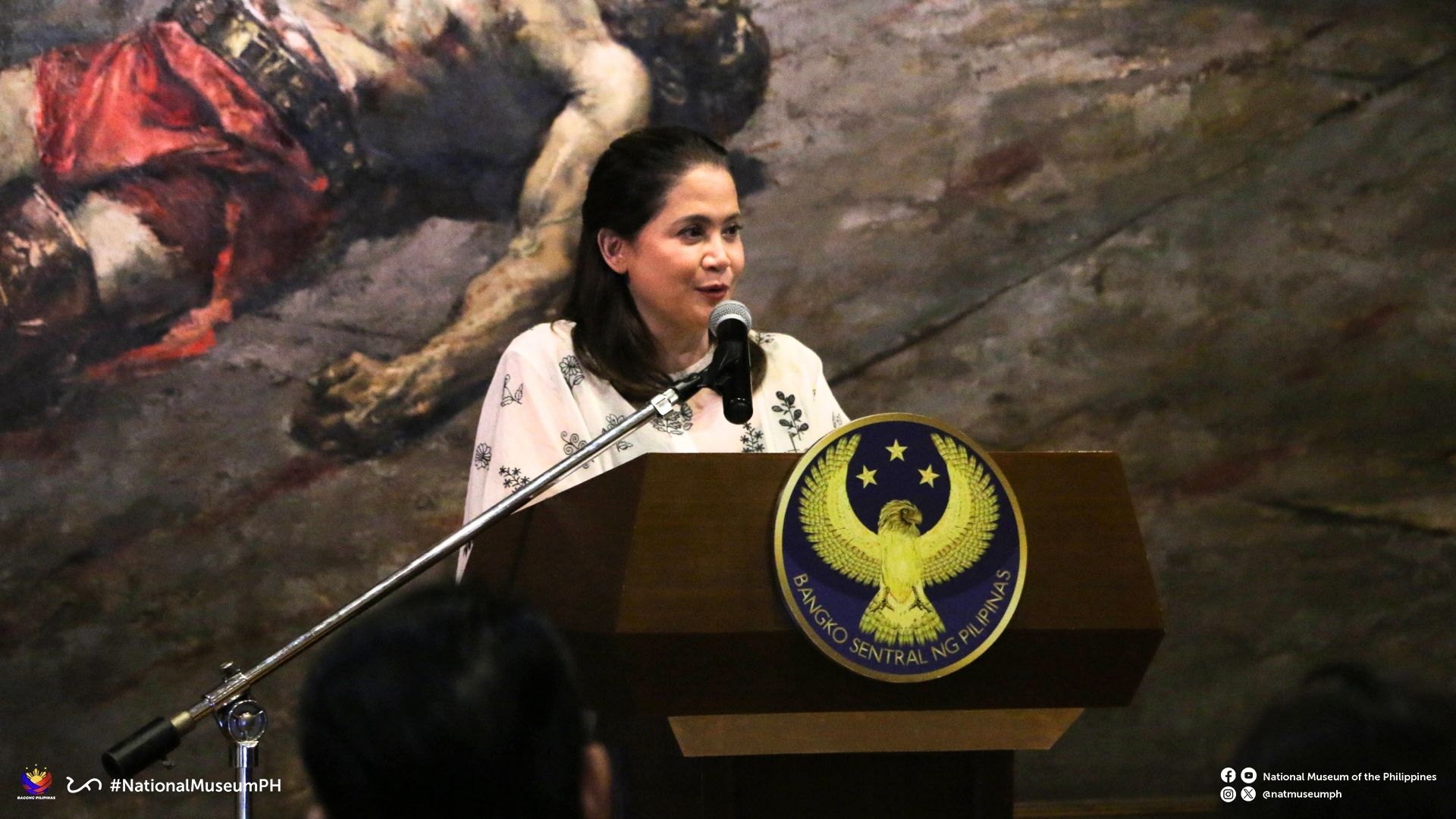
Deputy Governor General of the BSP, Berna Romulo Puyat
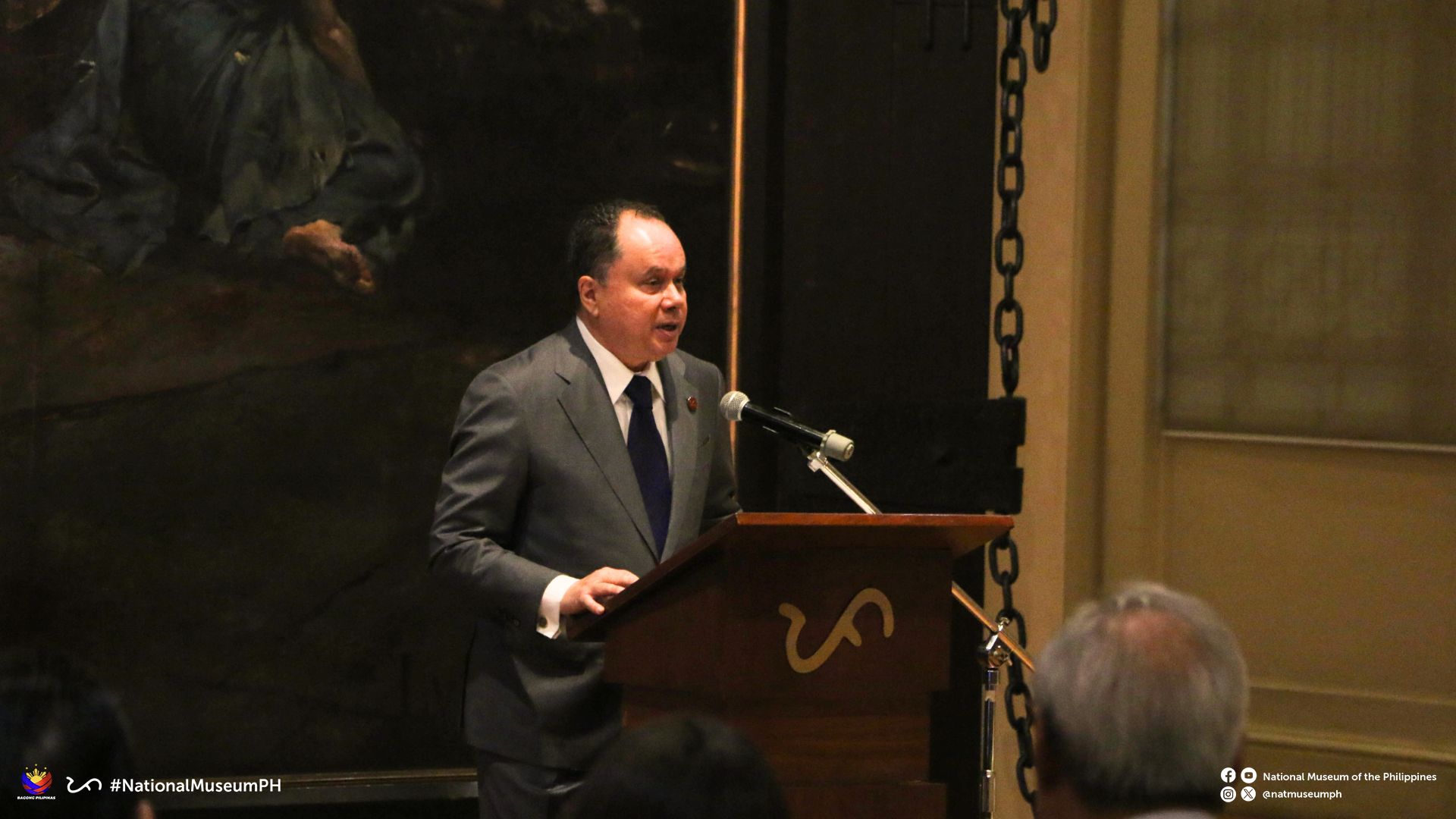
Chairman of NMP, Andoni Aboitiz
The BSP Governor Eli M. Remolona, Jr. and members of the Monetary Board joined the event, alongside former BSP Governor Amando M. Tetangco, Jr., Ms. Tess Espenilla (wife of the late Nestor A. Espenilla, Jr.), and the ever-graceful former Central Bank Governor Jaime C. Laya, who gave a short but enlightening talk about the BSP art collection.
From the NMP, Chairman Andoni Aboitiz, Director-General Jeremy Barns, and fellow trustees NCCA Chairman Victorino Mapa Manalo, Carlo Ebeo, and Jose Carlos Garcia-Campos also graced the occasion. Chairman Aboitiz expressed gratitude to the BSP for renewing its partnership, calling the exhibition a shining example of how financial institutions can also enrich our cultural wealth.
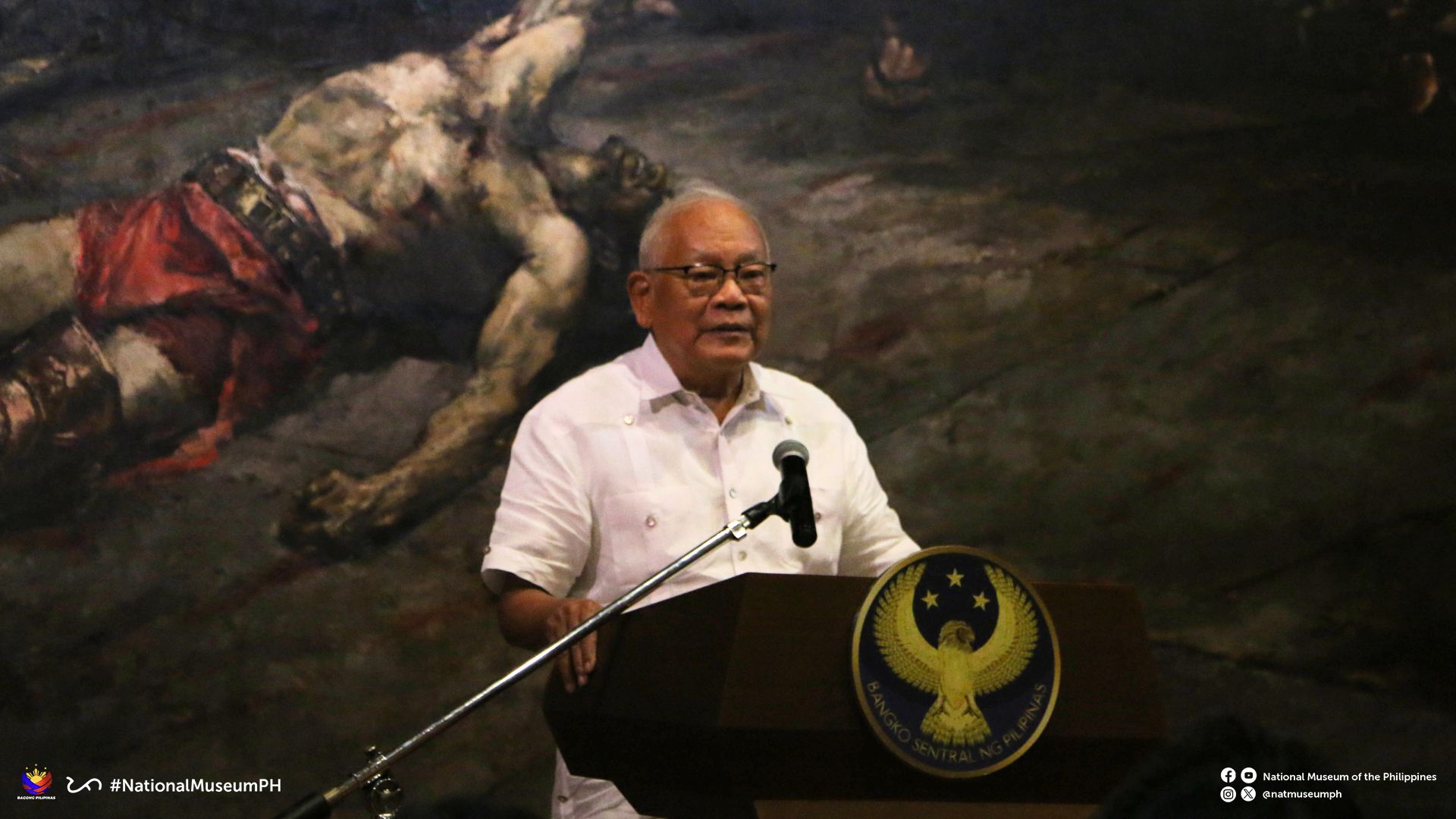
Former Governor of BSP Jaime Laya
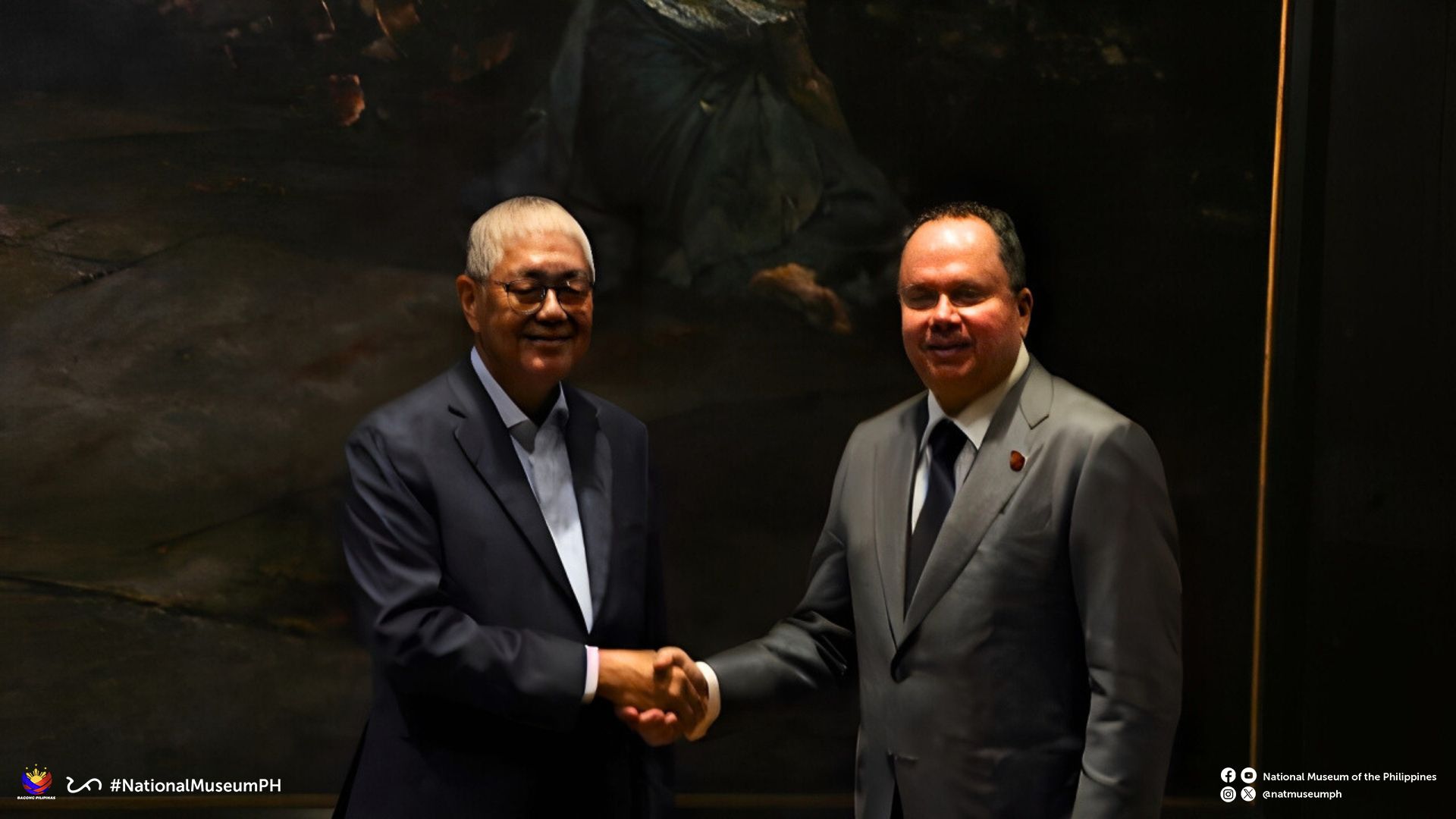
Governor of BSP Eli M. Remona and Chairman of NMP Board Andoni Aboitiz
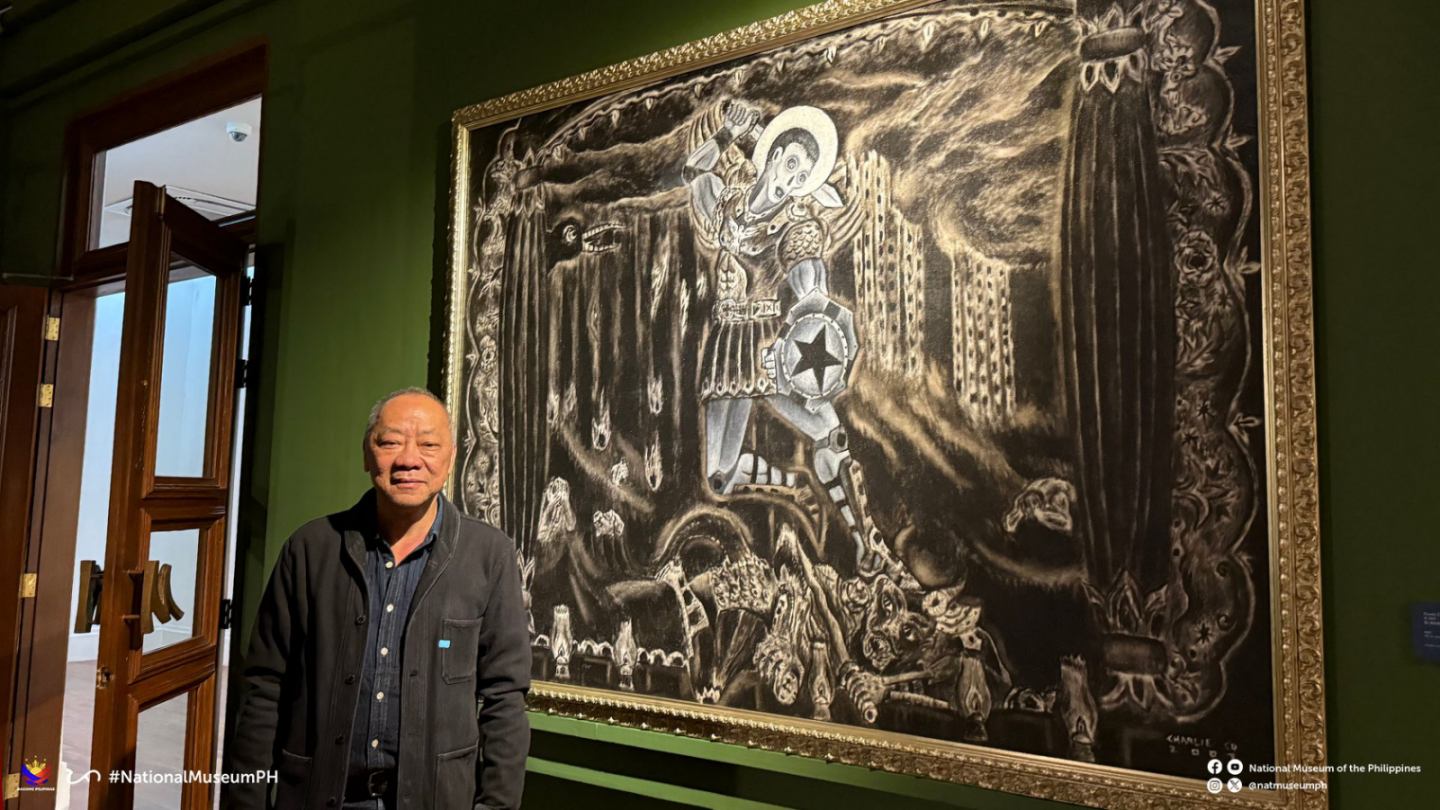
Artist Charlie Co
Before the official launch, a special media preview was held on 5 August, hosted by BSP Deputy Governor Bernadette Romulo-Puyat and DG Jeremy Barns. It gave lucky guests a sneak peek at the collection—because sometimes, even art likes to play “hard to get.”
The exhibition Kultura. Kapital. Kasalukuyan will run until November 2027 at Galleries XVIII and XIX, 3/F, National Museum of Fine Arts. Doors are open daily, 9:00 AM to 6:00 PM. So if you’re looking for something enriching that won’t hurt your wallet (admission is free!), this is your sign to visit. After all, the best kind of interest is cultural interest.
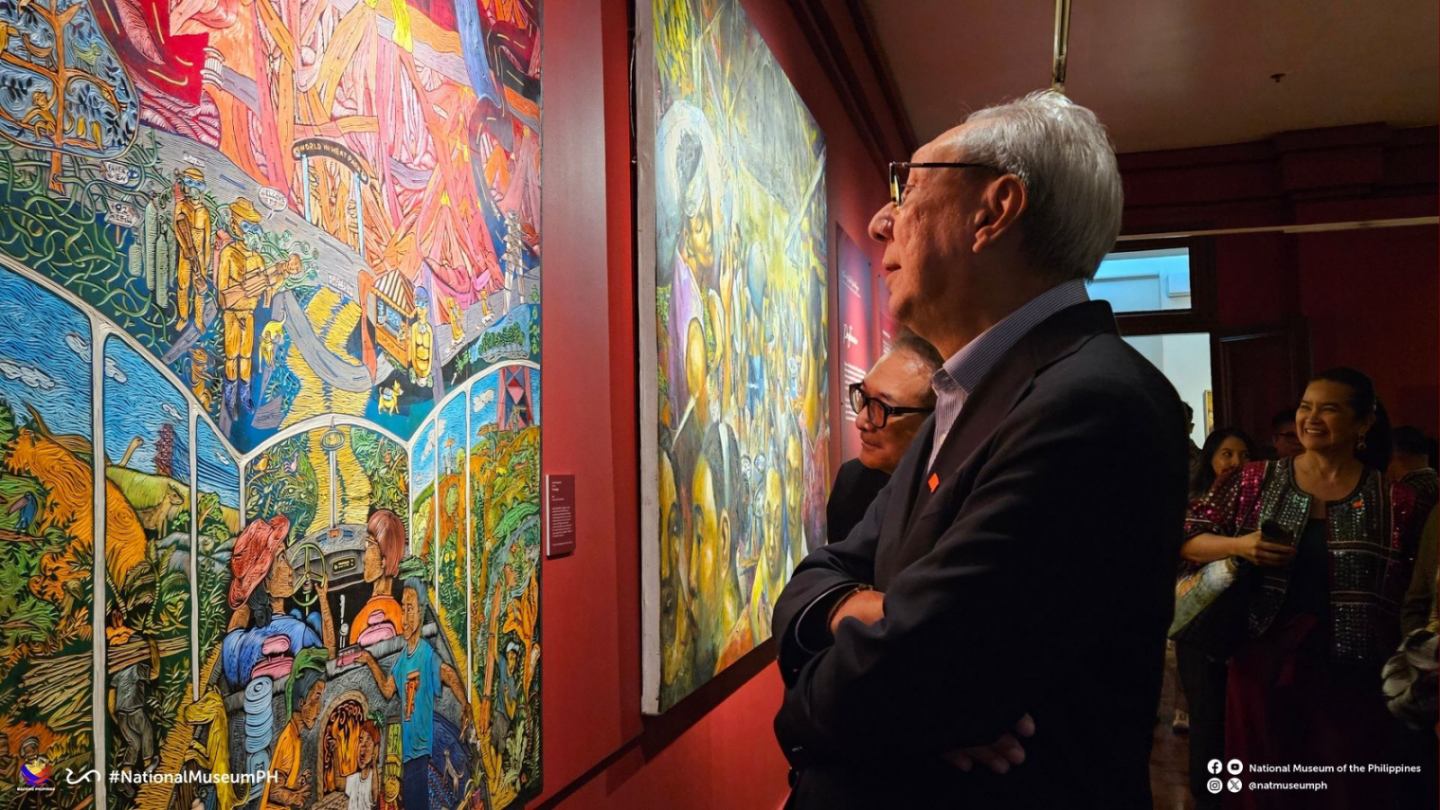
Monetary Board of the BSP, Walter C. Wassmer
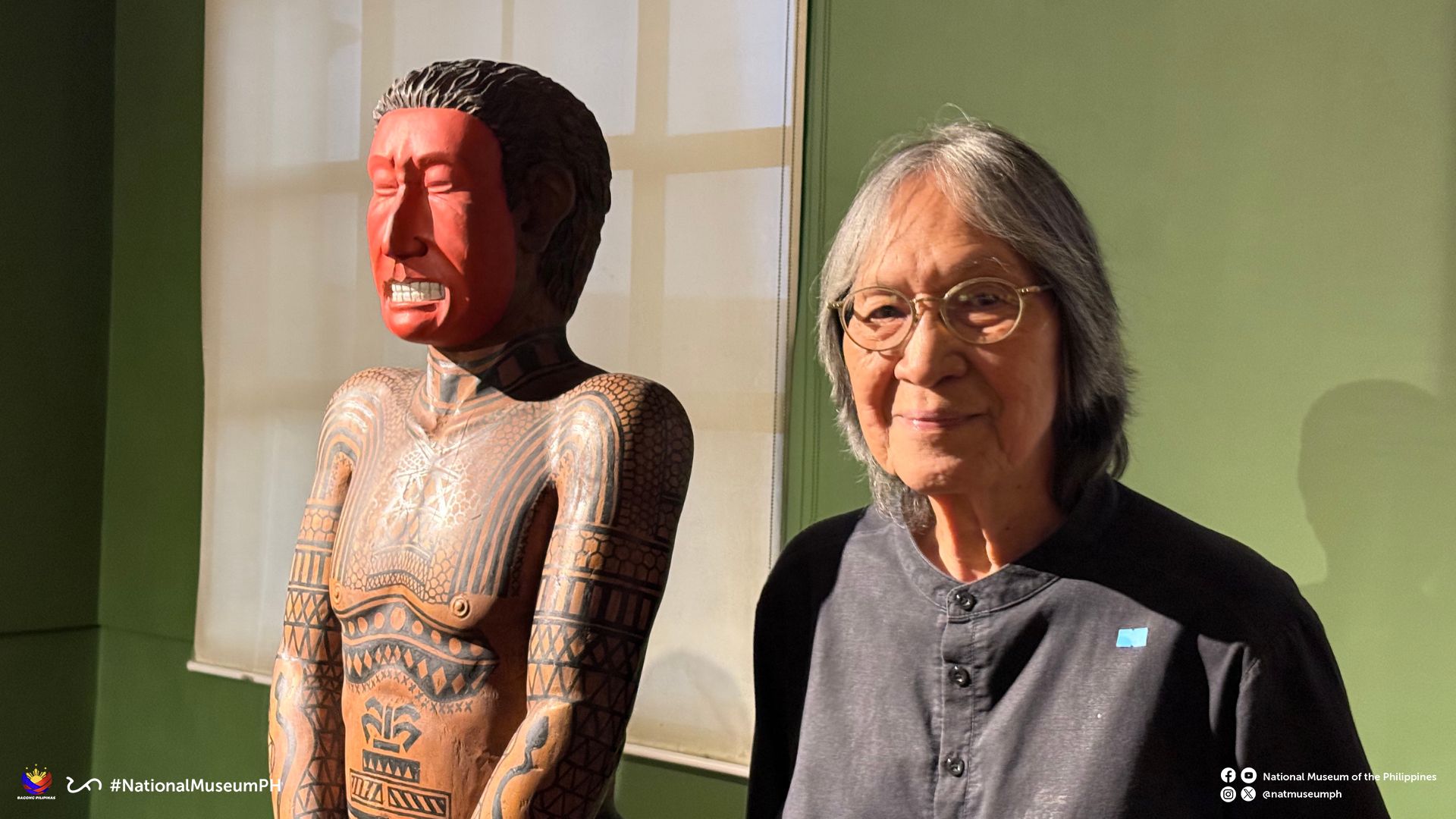
Luis Yee, Jr. aka ‘Junyee’ The Artist beside his Sculpture
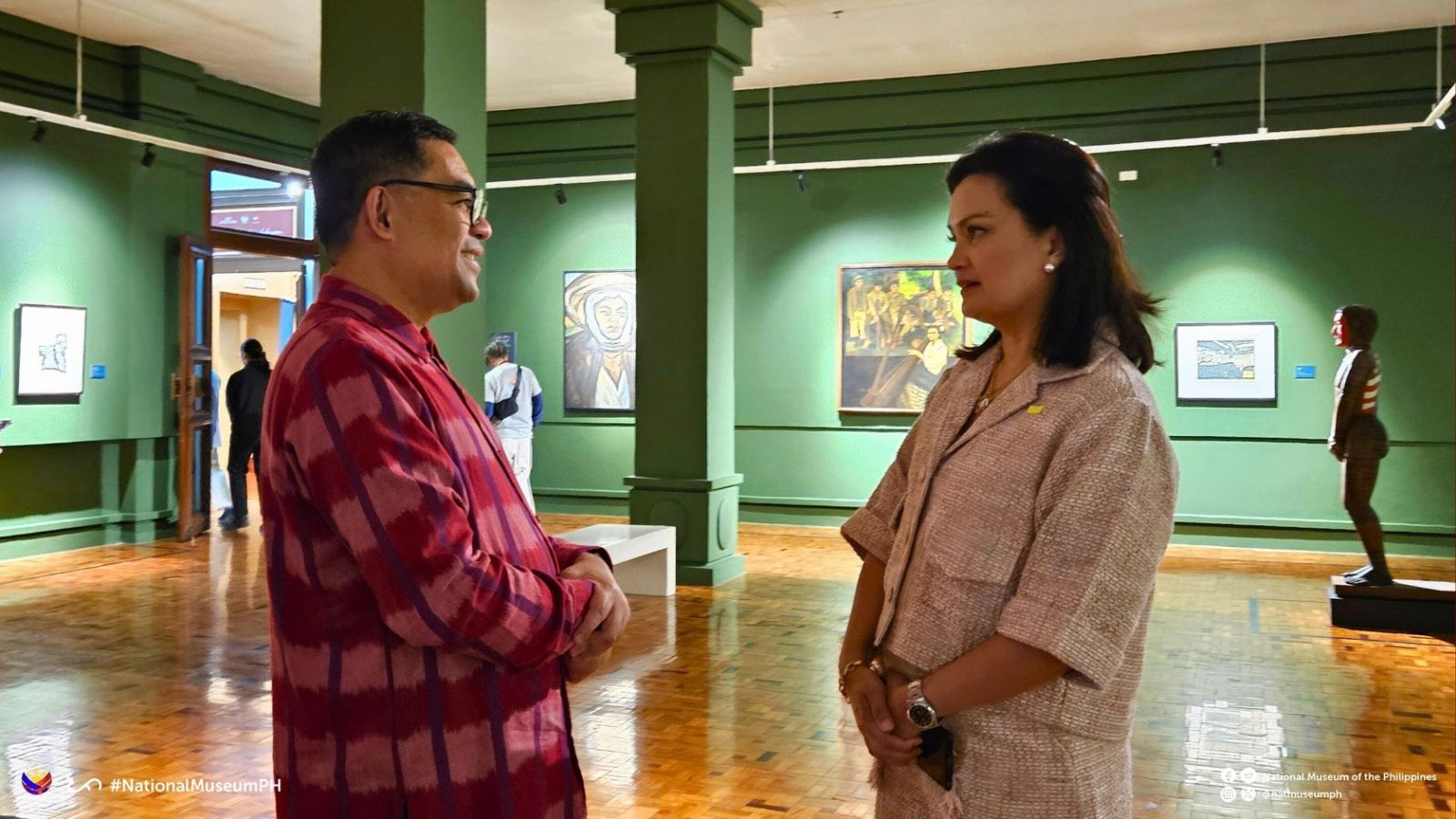
Arvin Manuel Villalon, Acting Deputy Director General for Museums, NMP with Ms. Daphne Osena Paez
Arts & Culture
Asia’s Fashion Czar I Knew as Tito Pitoy; Remembrance of a Friendship Beyond Fashion with Designer Jose R. Moreno
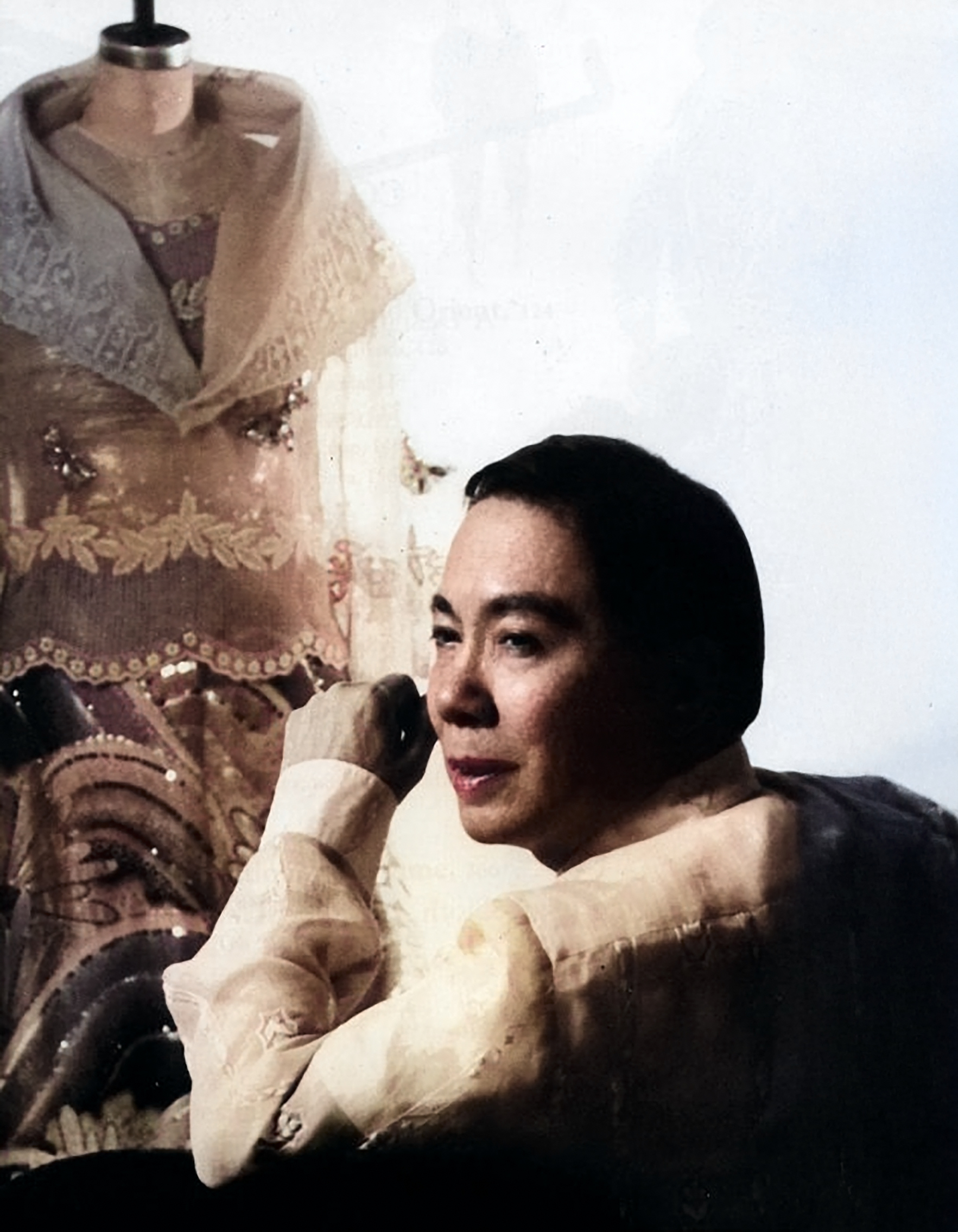
by Jose Carlos G. Campos, Board of Trustees National Museum of the Philippines
My childhood encounter with the famous Pitoy Moreno happened when I was eight years old. My maternal grandmother, Leonila D. Garcia, the former First Lady of the Philippines, and my mother, Linda G. Campos, along with my Dimataga aunts, brought me to his legendary atelier on General Malvar Street in Malate, Manila. These were the unhurried years of the 1970s.
As we approached the atelier, I was enchanted by its fine appointments. The cerulean blue and canary yellow striped canopies shaded tall bay windows draped in fine lace—no signage needed, the designer’s elegance spoke for itself. Inside, we were led to a hallway adorned with Art Deco wooden filigree, and there was Pitoy Moreno himself waiting with open arms—”Kamusta na, Inday and Baby Linda,” as he fondly called Lola and Mommy.
“Ahhh Pitoy, it’s been a while,” Lola spoke with joy.
“Oh eto, may kasal na naman,” my mom teasingly smiled.
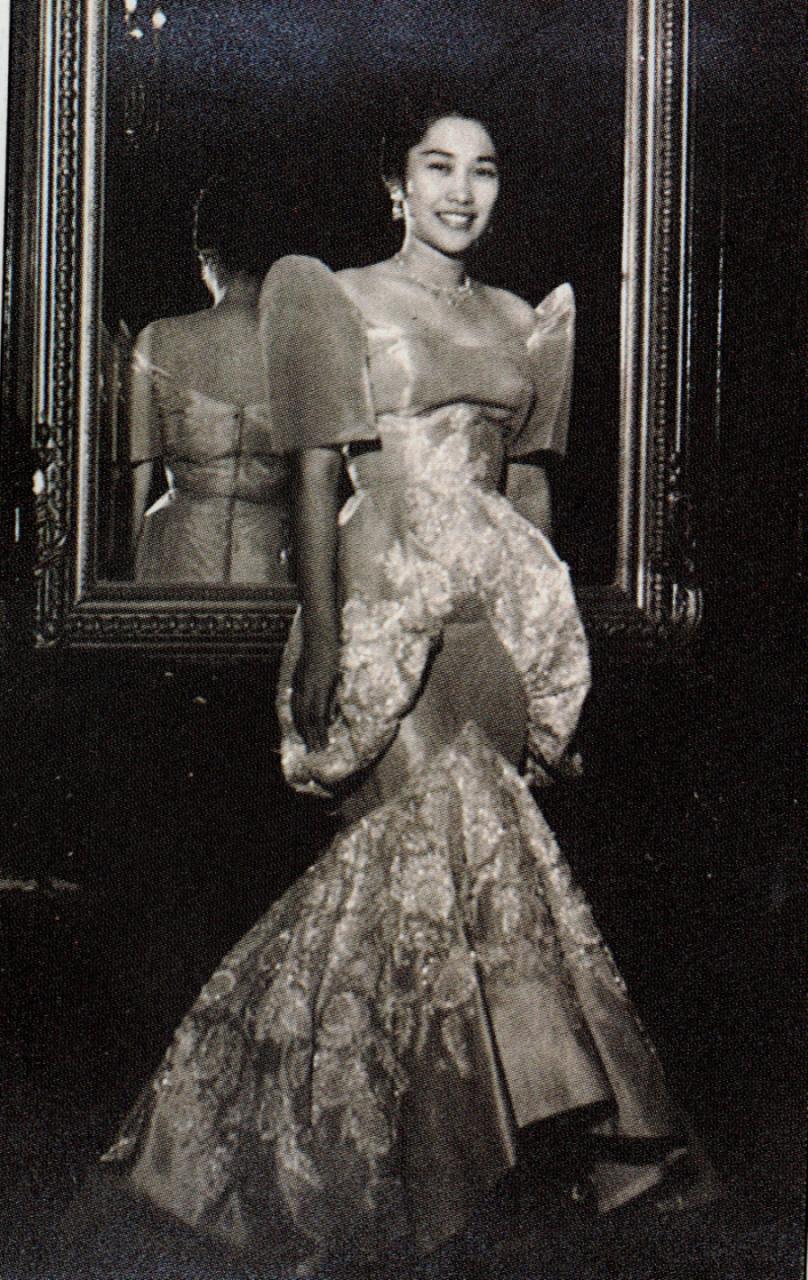
Linda Garcia Campos and Pitoy Moreno’s friendship started when they were students in the University of the Philippines in Diliman.
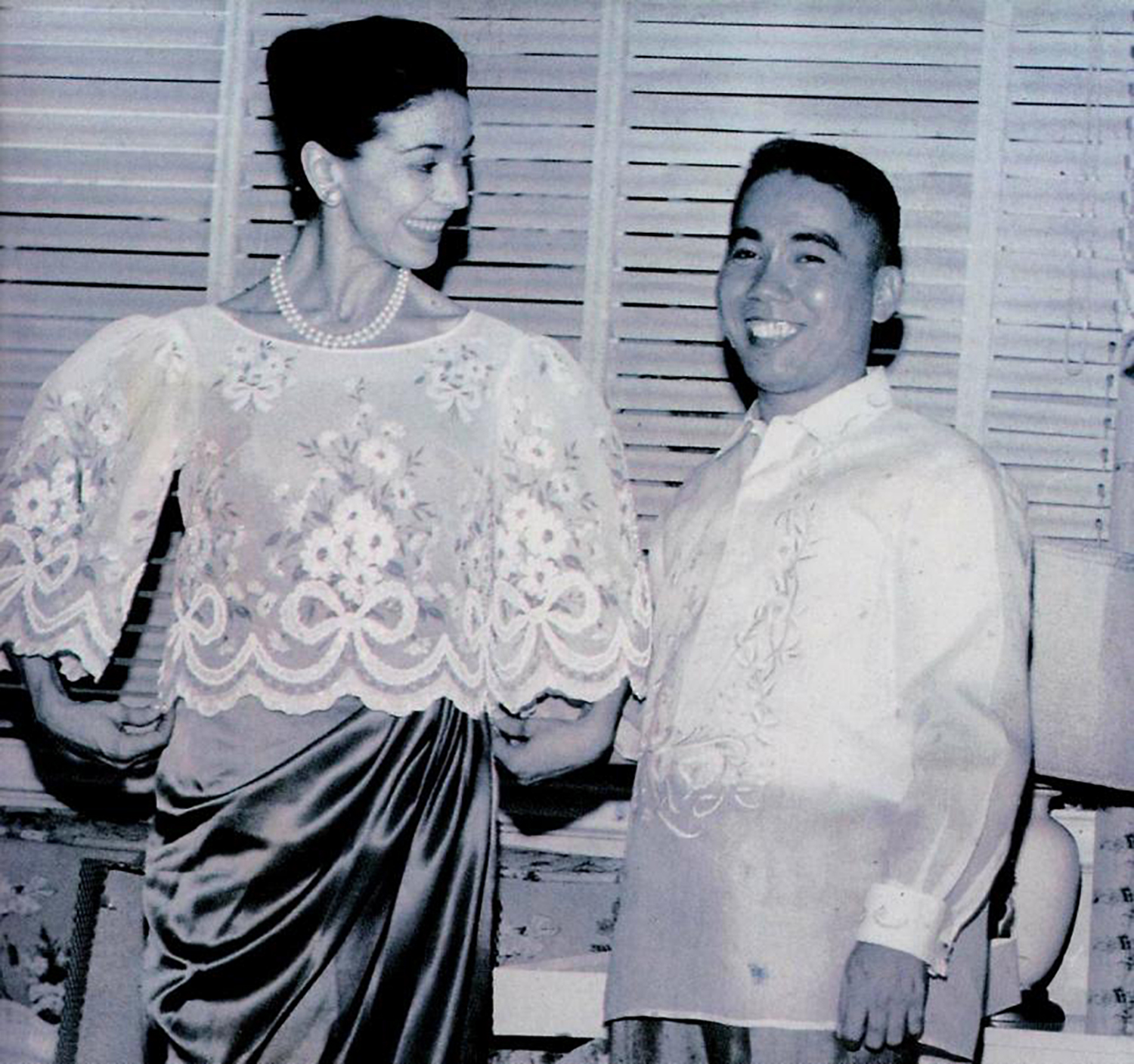
When Dame Margot Fonteyn came for a visit to Manila, Pitoy Moreno dressed her up for an occasion.
We had entered a world of beauty—porcelain figurines, ancient earthenware and pre-colonial relics. It was like stepping into a looking glass, only Pitoy could have imagined.
Destiny led me back years later when my mother Linda told me that Pitoy Moreno was working on his second book, Philippine Costume, and needed research material and editorial advice. At this point, around the 1990s, I was in between assignments—unsure of how a broadcasting graduate like me could possibly contribute to a fashion icon’s masterpiece. Fortunately, I agreed to the project.
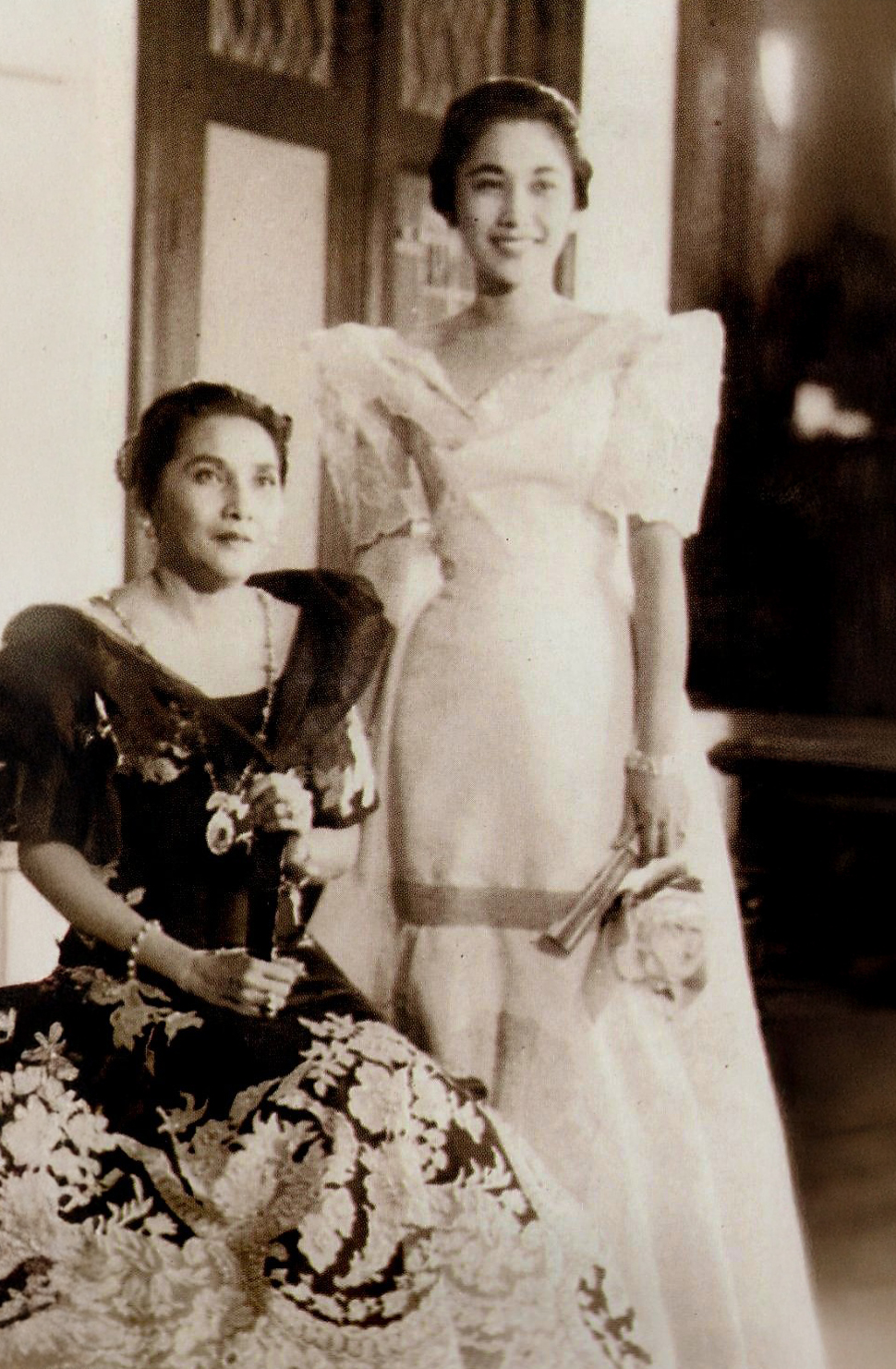
Former First Lady Leonila D. Garcia and daughter Linda G. Campos in Malacañang Palace.
Returning to the designer’s atelier brought back a rush of pleasant memories. The gate opened, and there stood Pitoy Moreno, beaming as always.
“Come in, hijo. Let me show you what I have in mind—and call me Tito Pitoy, okay?”
He led me to his worktable.
“I want to publish a book that tells the story of Philippine fashion—from our pre-colonial roots to the present. A designer’s collection of images and heritage expressed in clothing.”
I was awestruck. “How can I help you?” I inquired.
“Did you know that your mother, Linda, was my barkada in the University of the Philippines in Diliman?” he grinned.
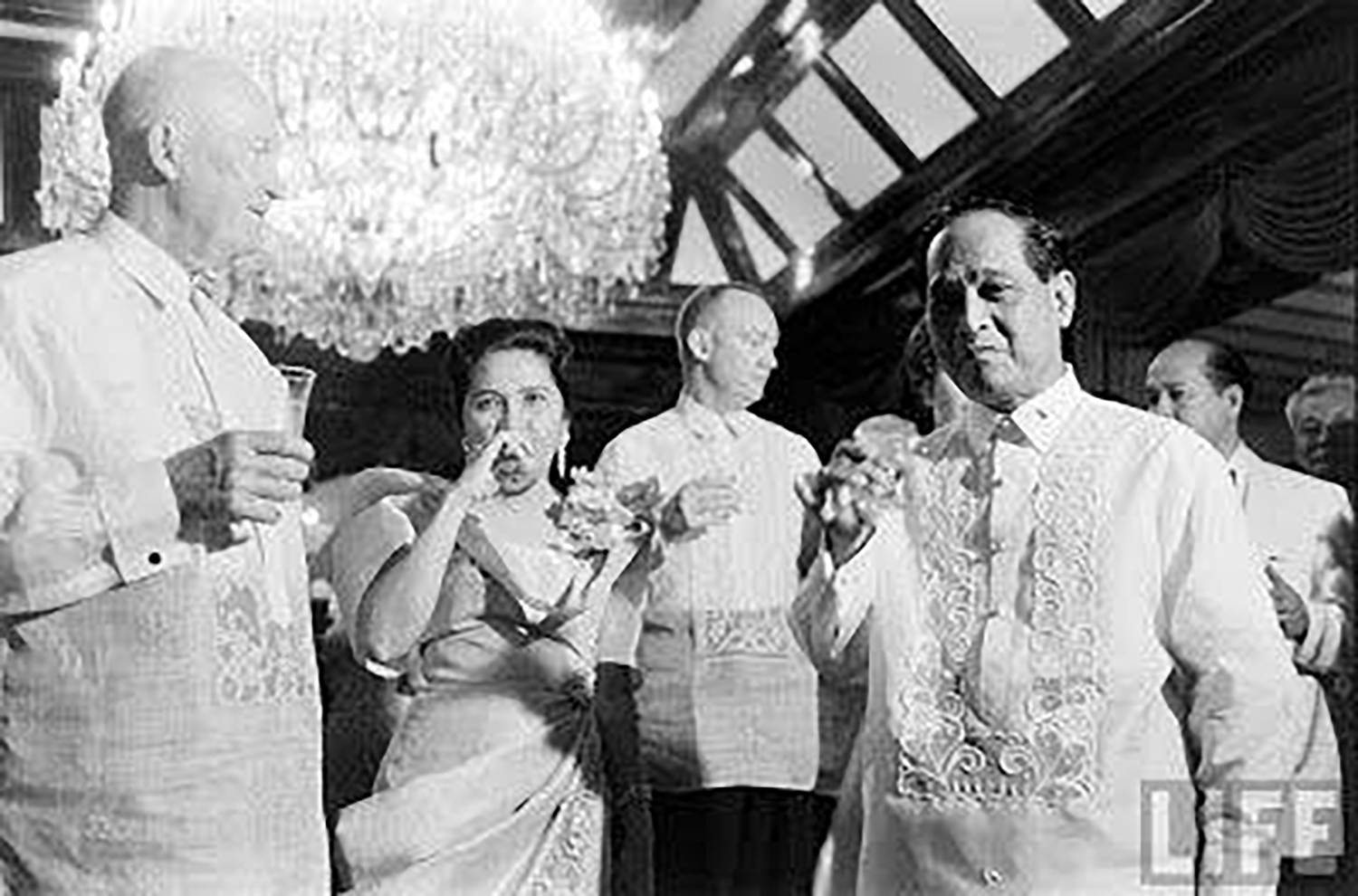
US President Dwight Eisenhower with First Lady Leonila Garcia and President Carlos Garcia in a state dinner at Malacañang Palace in Manila.
That friendship soon led to one of the proudest moments of the designer’s life. He had the opportunity to dress not only the First Lady Leonila D. Garcia but also President Carlos P. Garcia during his term. It was also during this time that the President of the United States, Dwight Eisenhower, came for an official visit to Manila. The designer was able to make clothes for the President, his daughter, and his staff.
“Eisenhower even asked for discounts on the barong Tagalog,” Tito Pitoy laughed.
Tito Pitoy then asked if I could find a terno he had made for my Lola, the former First Lady, which she wore for President Eisenhower’s state visit in 1960.
“How about her other ternos, dated from the 1920s to the 1960s?” I offered.
He lit up.
I scoured my Lola’s extensive closet—it felt like unearthing a legacy. Tucked behind layers of vintage ternos from countless fashion designers, I found that terno, which was photographed by Dick Baldovino along with other pieces for the book project. Once the project was finished and I myself had moved on, my bond with Tito Pitoy never wavered.
When my Lola passed away, he was deeply touched when I personally informed him of the sad news. Once, at the wake of former Vice President Salvador Laurel, he asked me to assist him in the placement of the medals in the chapel.
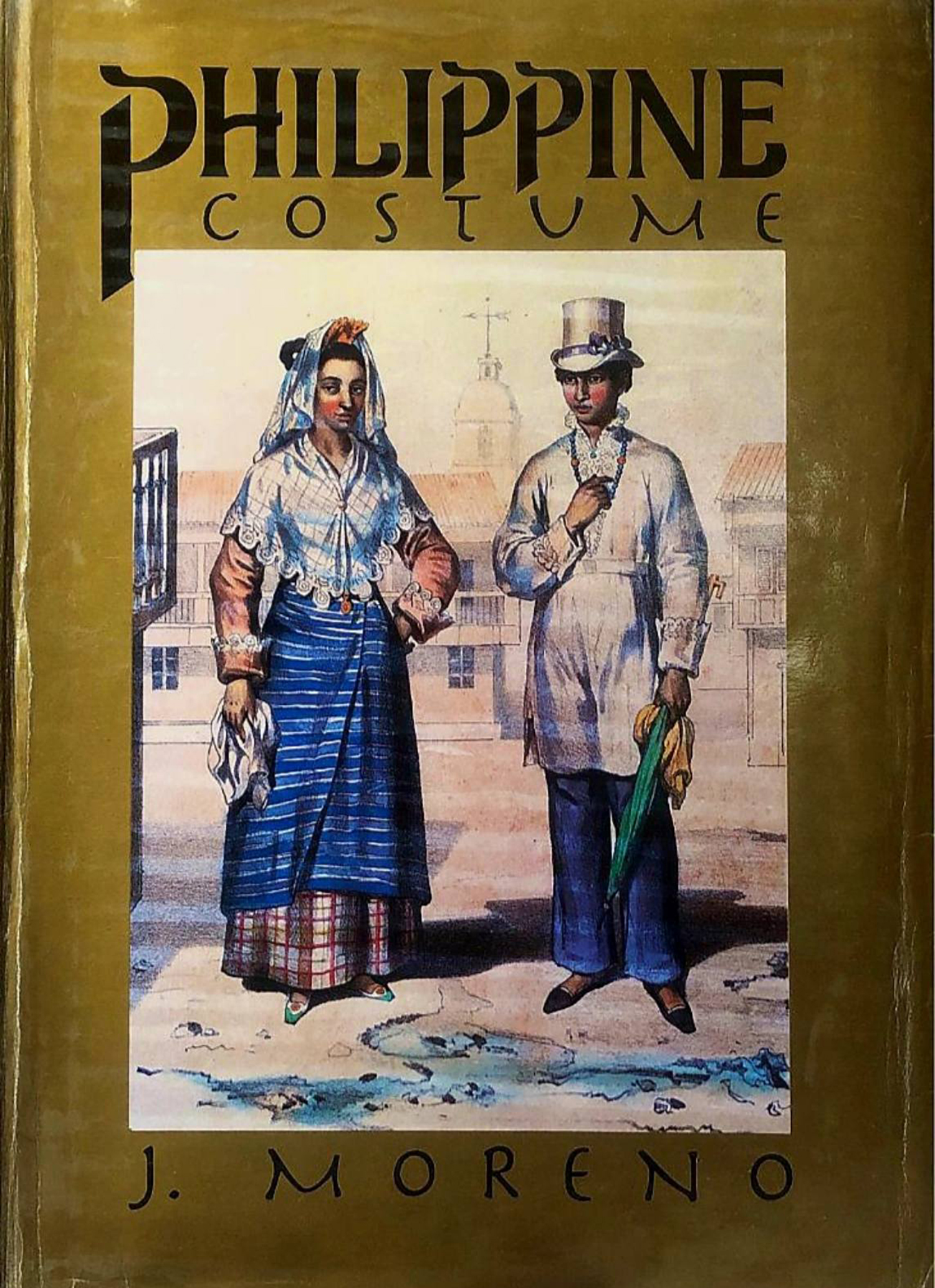
Philippine Costume by Jose Moreno is the designer’s collection of images and heritage expressed in clothing.
Tito Pitoy later invited me to his 80th birthday celebration—a dazzling Manila affair in 2012. During the evening’s festivities, he handed me a printed copy of Philippine Costume and added warmly,
“Thank you, hijo. I’ll call on you for the next one.”
The highlight of his career—and his most unforgettable moment—came during the Metro Magazine Gala fashion show: A Tribute to Pitoy Moreno, Fashion Icon. A collection of evening gowns spanning six decades—many of them unseen and tucked away in his atelier—were revealed that night. When the finale came, Tito Pitoy walked the stage, triumphant and waving to a sea of admirers. Longtime friends from the industry, society’s finest, and fashionistas rose from their seats and gave him a standing ovation.
It wasn’t just to celebrate his craft and ingenuity—it was to honor the man who brought elegance, history, and heart in every stitch.
Arts & Culture
Queer Coding in Cinema: The Best Shows to Binge for Pride Month 2025

compiled by Edge Javier
As Pride Month 2025 goes into full swing, the best way to celebrate LGBTQIA+ voices is with a binge-worthy lineup of shows that center queer stories, joy, love, resilience — and yes, of course, drama. From groundbreaking recent series to must-watch staples and fan favorites, here are the top shows to stream this June that reflect the vibrant spectrum of the queer-coded experience.
1. Heartstopper – Season 3 (Netflix)
Nick and Charlie are back, and the coming-of-age sweetness is stronger than ever. Season 3 explores deeper emotional territory while keeping the wholesome tone fans adore. Expect more queer joy, nuanced relationships, and tearjerker moments that feel like a warm hug.

2. Drag Me to Dinner (Hulu)
Hosted by Neil Patrick Harris, this chaotic culinary competition pairs drag duos in a battle to throw the most fabulous themed dinner party. With outrageous challenges, surprise twists, and plenty of camp, queens serve up equal parts food, flair, and fierce shade. It’s RuPaul meets Top Chef—served with a side of sequins.

3. Queer Planet (Apple TV+)
Hosted by Janelle Monáe, this visually stunning docuseries dives into queerness in the animal kingdom and parallels in human identities. It’s smart, groundbreaking, and perfect for those who want to feel seen—and informed.
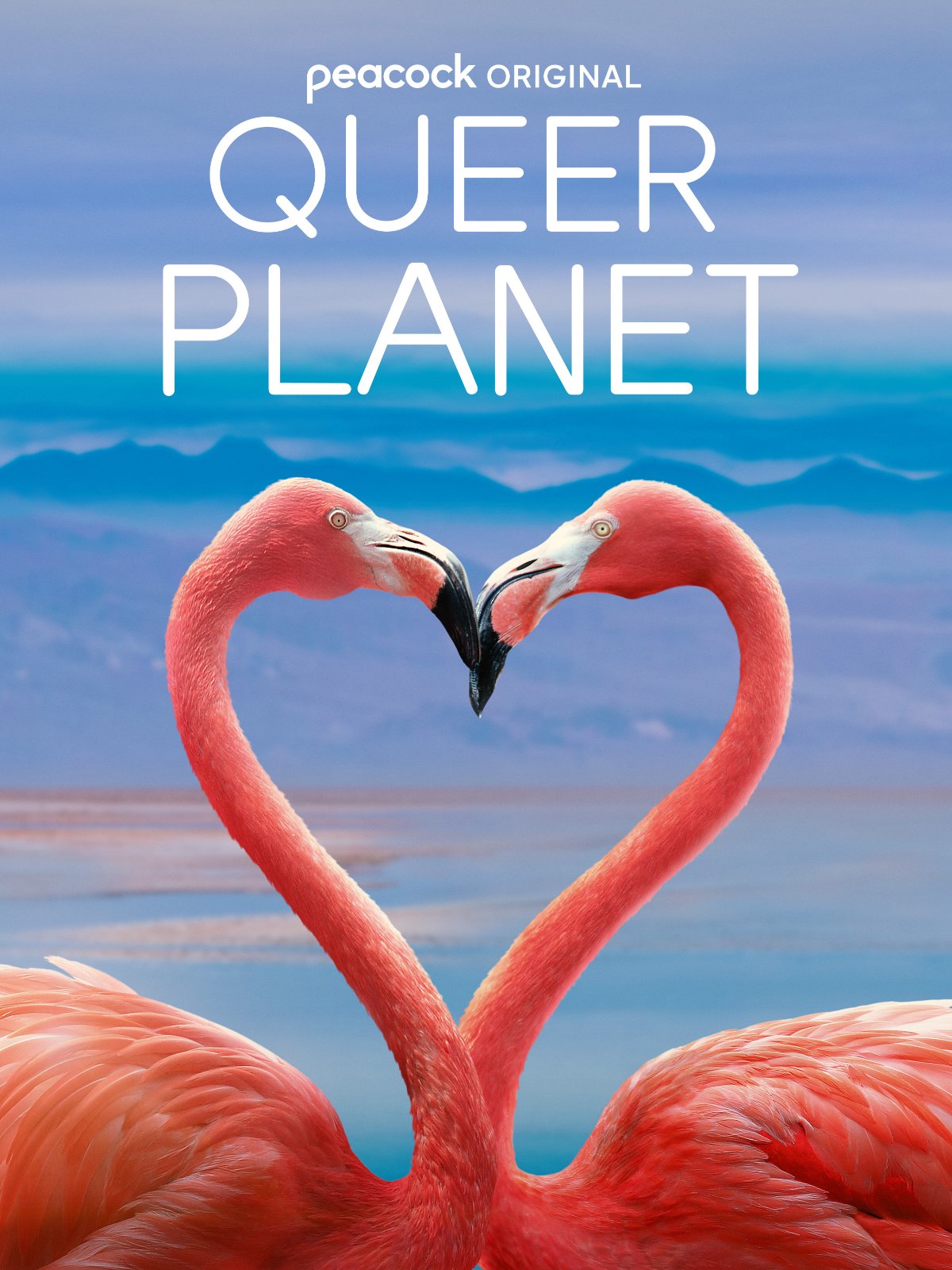
4. Fellow Travelers (Paramount+)
This period romance-drama set during the Lavender Scare continues to grip audiences with its tragic beauty and sharp historical insight. If you missed Season 1, now is the perfect time to catch up before the highly anticipated Season 2 lands later this year.

5. The Buccaneers – Season 2 (Apple TV+)
The unapologetically queer period drama returns with more scandal, sapphic yearning, and feminist rebellion among American heiresses navigating high society in 1870s London. Think Bridgerton, but with more edge and better sapphic representation.

6. Our Flag Means Death – The Finale Special (Max)
This fan-favorite pirate rom-com wraps up with a one-hour finale special airing this June. Whether you’re rewatching from the start or jumping into the last hurrah, this show remains a shining example of queer love told with heart and humor.
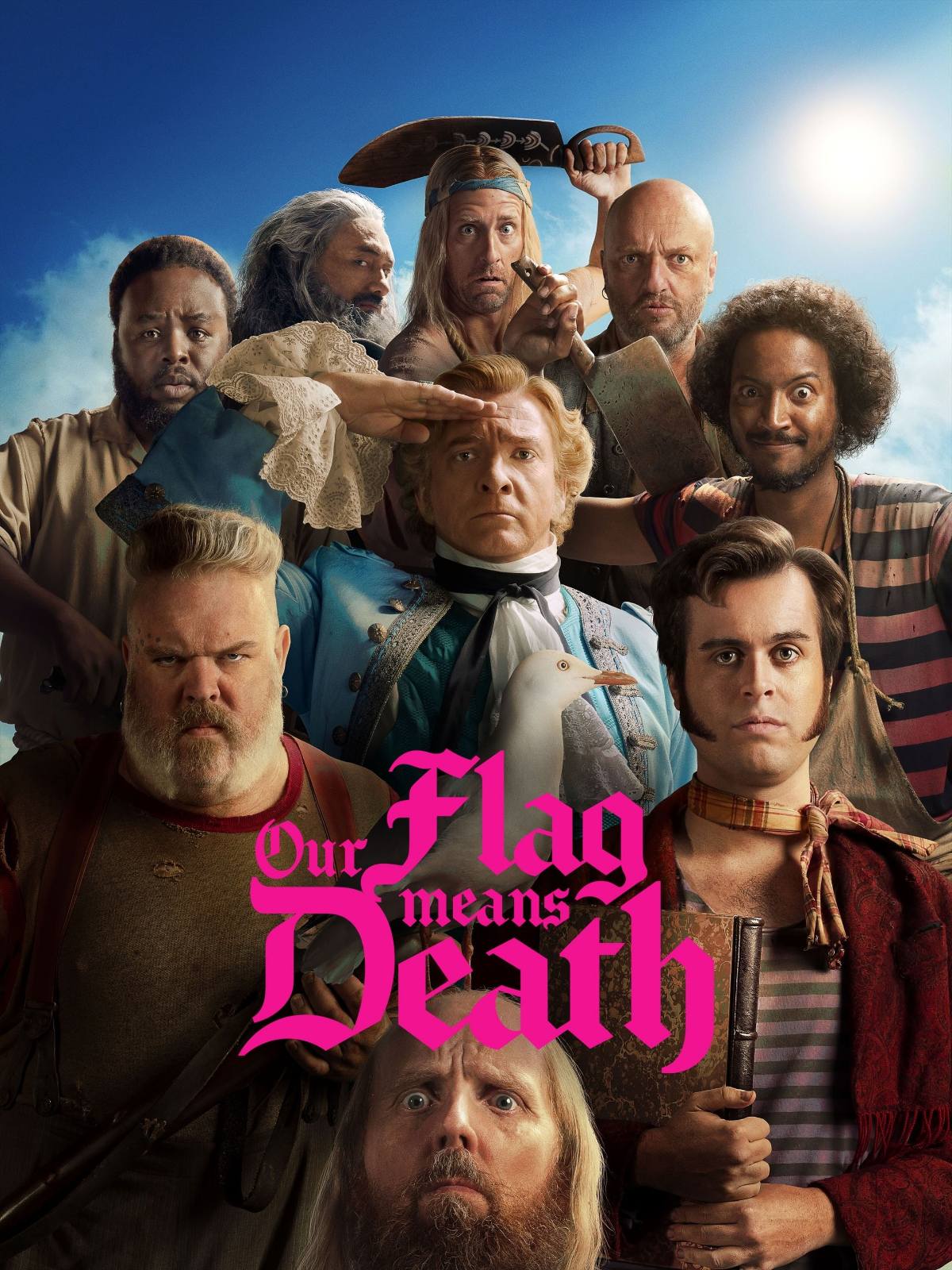
7. This Is Me Now… The Series (Prime Video)
Following Jennifer Lopez’s genre-blurring film-musical hybrid, the series version delves into themes of love, identity, and self-acceptance, and features cameos by queer icons and allies. It’s campy, messy, and made for Pride Month mood-boosting.
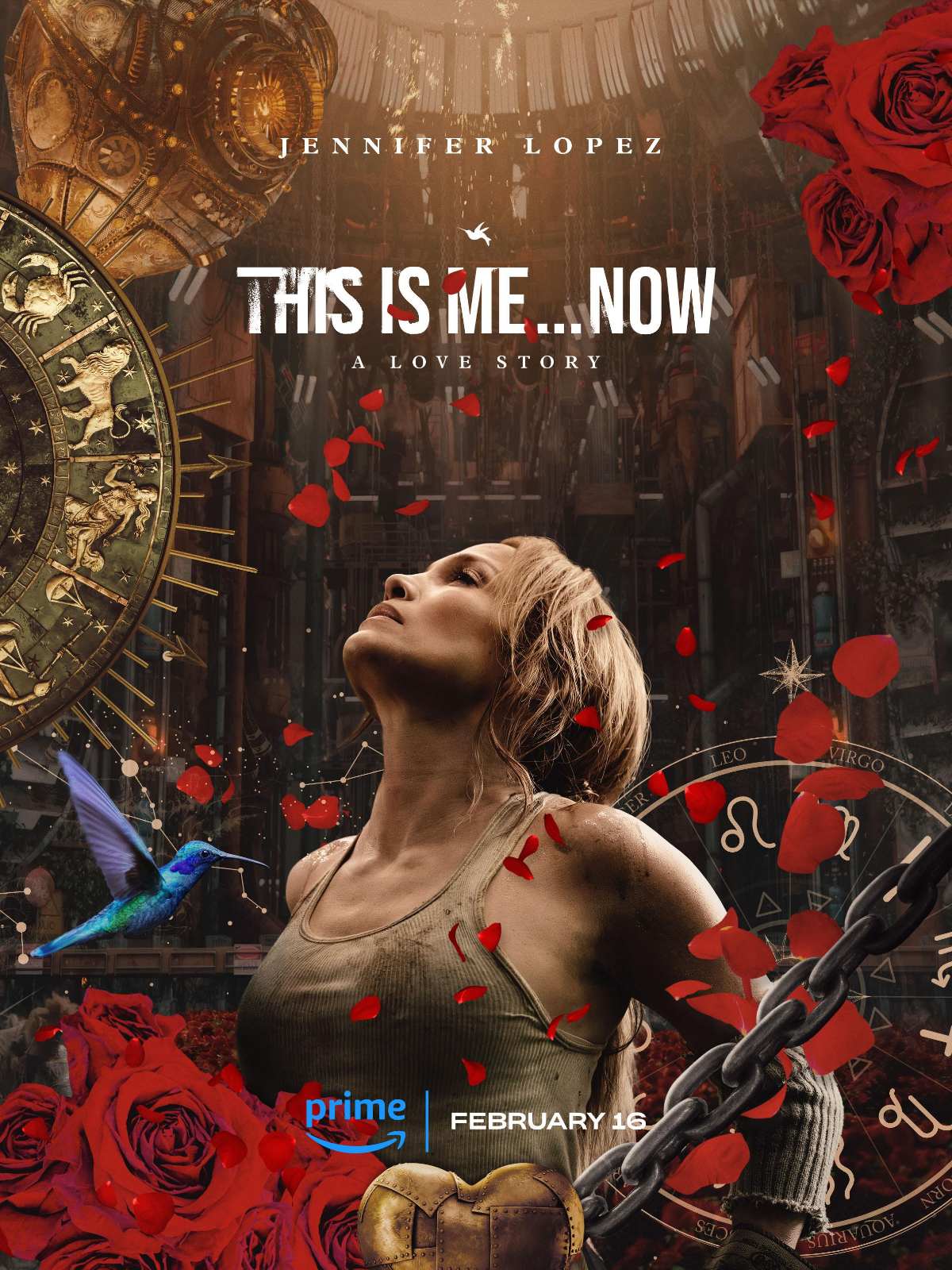
8. Sort Of – Final Season (Max)
This critically acclaimed dramedy about a gender-fluid millennial navigating love, grief, and identity in Toronto comes to a close with an emotionally rich final season. A thoughtful and often hilarious story that never loses its beating heart.
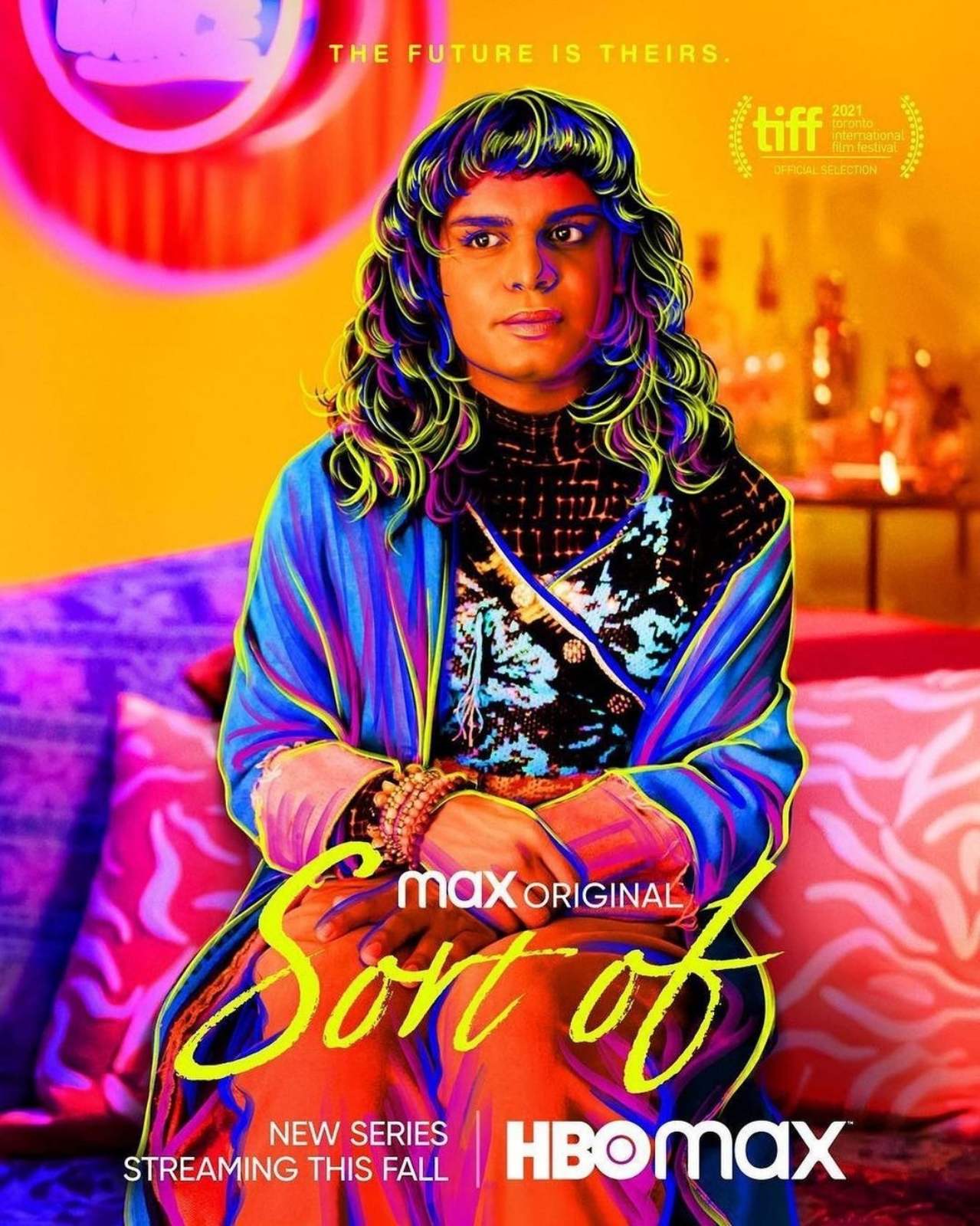
9. Red, White & Royal Blue – Limited Series (Prime Video)
After the hit film adaptation, the beloved queer romance returns in a serialized format, expanding on Alex and Henry’s story with new twists and deeper character arcs. It’s romantic escapism, elevated.
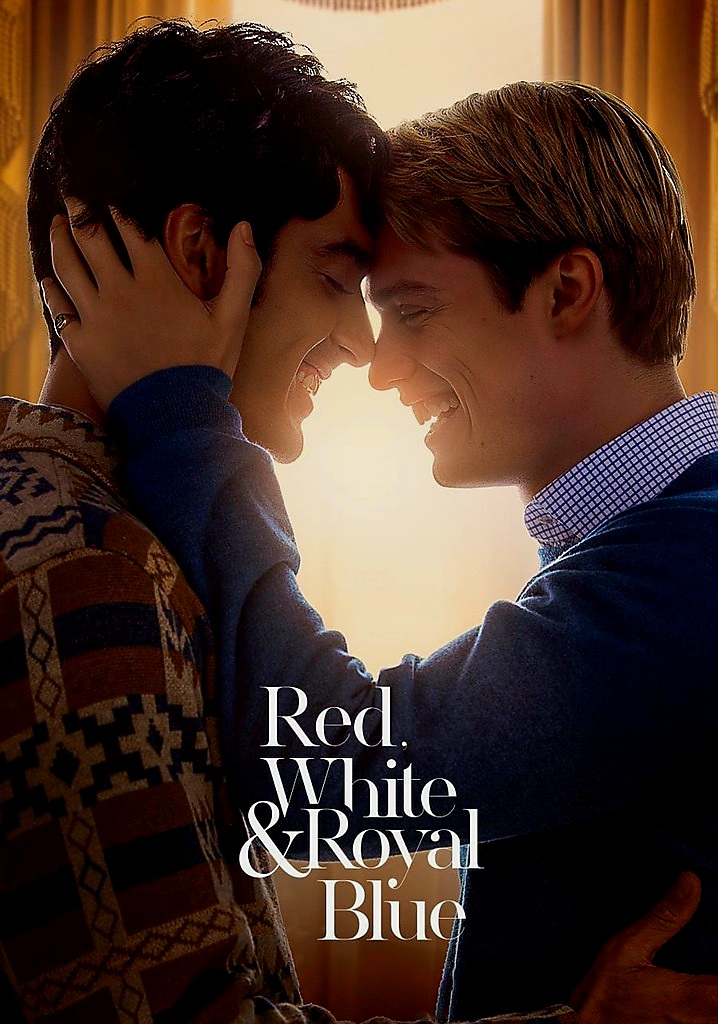
10. POSE: The Legacy (FX/Hulu)
This documentary miniseries honors the cultural legacy of POSE and the real-life ballroom legends who inspired it. Featuring interviews with cast, creators, and icons from the scene, it’s a must-watch tribute to queer history and resilience.
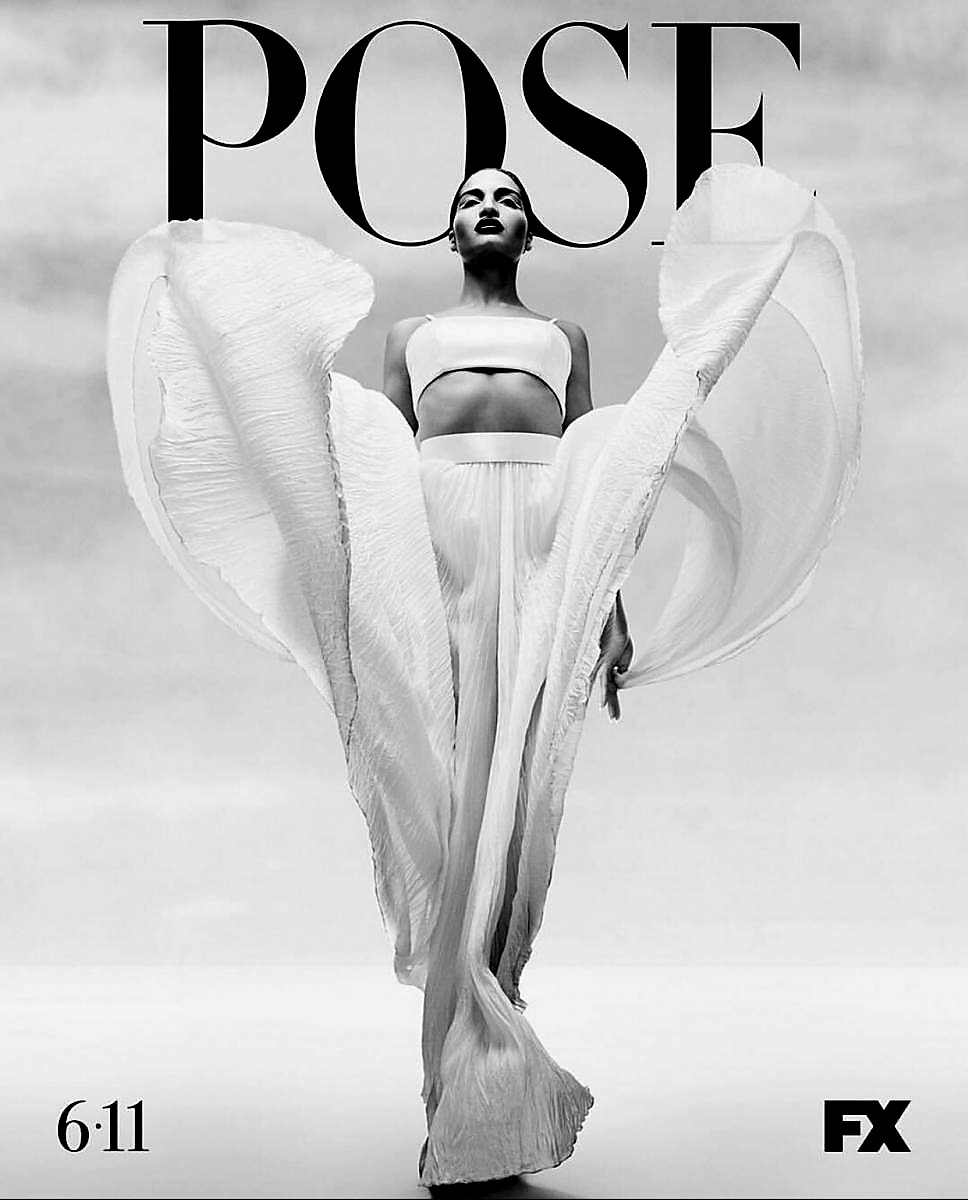
Whether you’re looking for laughter, tears, romance, or revolution, these Pride Month picks for 2025 offer it all—while honoring the complexity and beauty of LGBTQIA+ lives. So press play, turn up the volume, and let queer stories shine this June and beyond. Happy Pride! 🏳️🌈
-
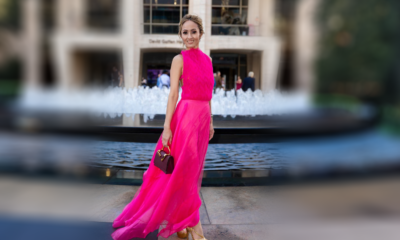
 Style2 weeks ago
Style2 weeks agoHappy Melendres Traipsing Around Manhattan in Non-Stop Armani
-
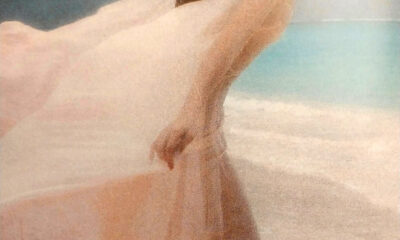
 Style2 months ago
Style2 months agoThe Invisible Part of Fashion: Five of the Most Enduring Fragrances of All Times
-
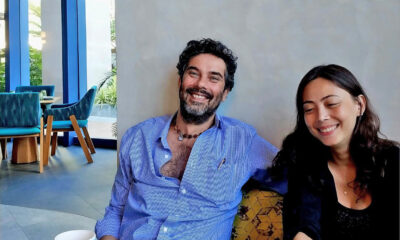
 QuickFx3 months ago
QuickFx3 months agoModern Indian Cuisine; Gagan Sethi and Gwen Trott Spice Things Up at Goa Nights in Cebu
-

 Arts & Culture1 month ago
Arts & Culture1 month agoKultura. Kapital. Kasalukuyan: Art that Speaks of Today
-
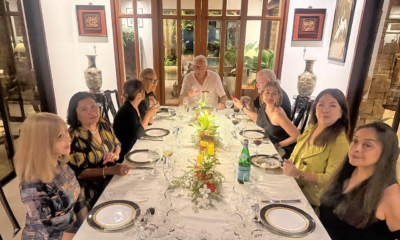
 The Scene3 weeks ago
The Scene3 weeks agoAnother Elegant Dinner at Chez Marguerite
-

 Prime Target3 weeks ago
Prime Target3 weeks agoLuna Vdl–Endless Summers in Siargao
-

 The Scene1 month ago
The Scene1 month agoA Stylish Soirée: Cebu’s Elite Celebrate Jackie Deen Lotzoff at Mad Thai
-
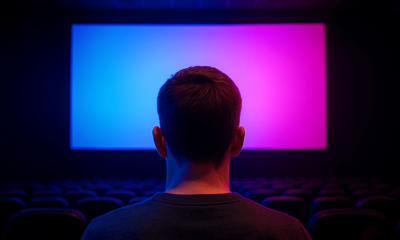
 QuickFx3 weeks ago
QuickFx3 weeks agoI Lost It at the Movies: Five of the Most Significant Films of the 1960s


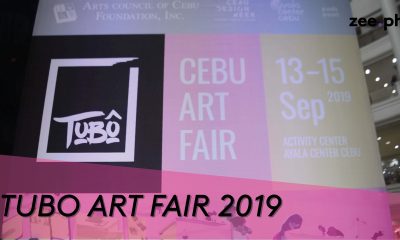

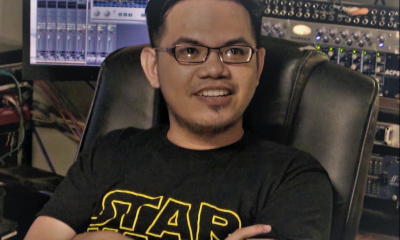


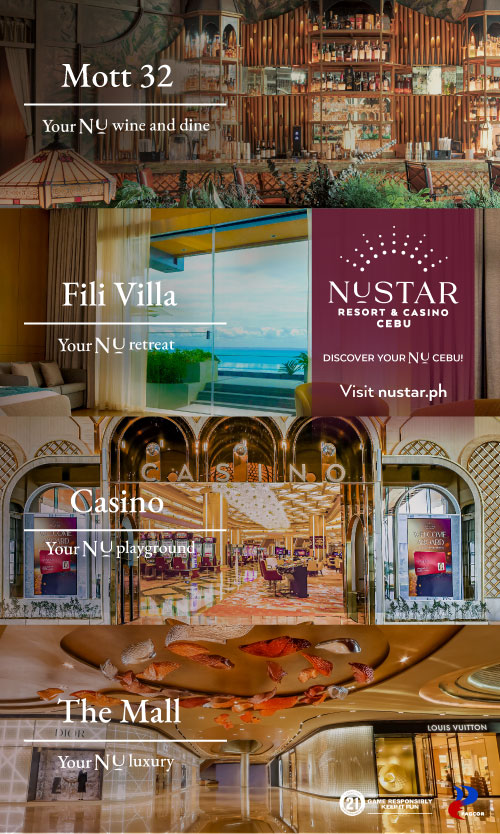

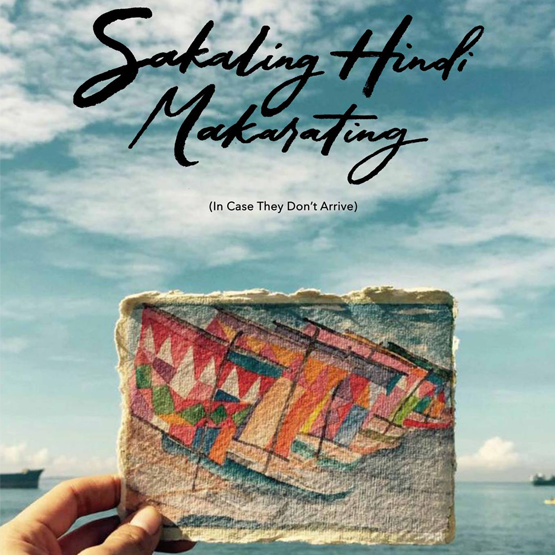





You must be logged in to post a comment Login